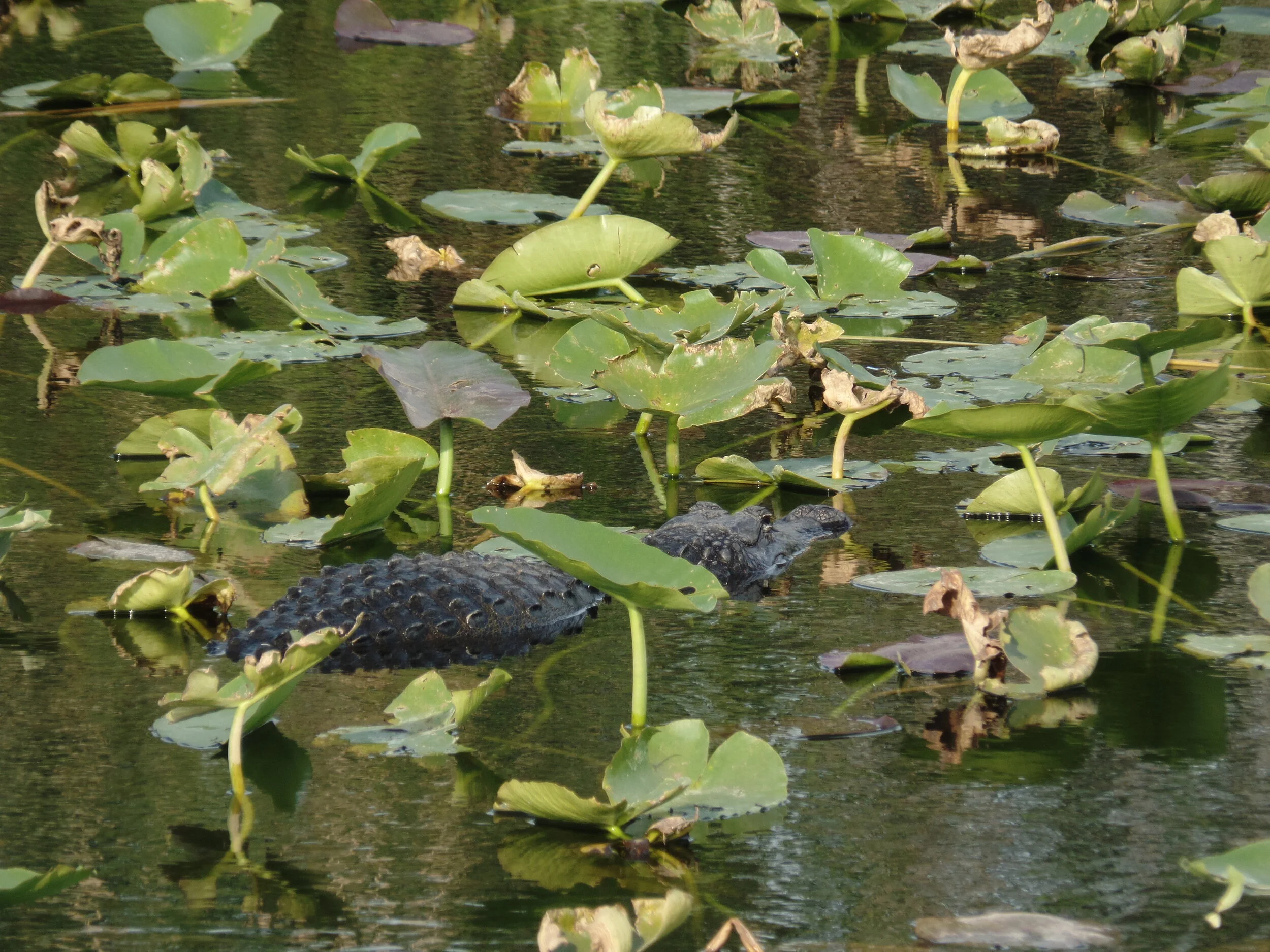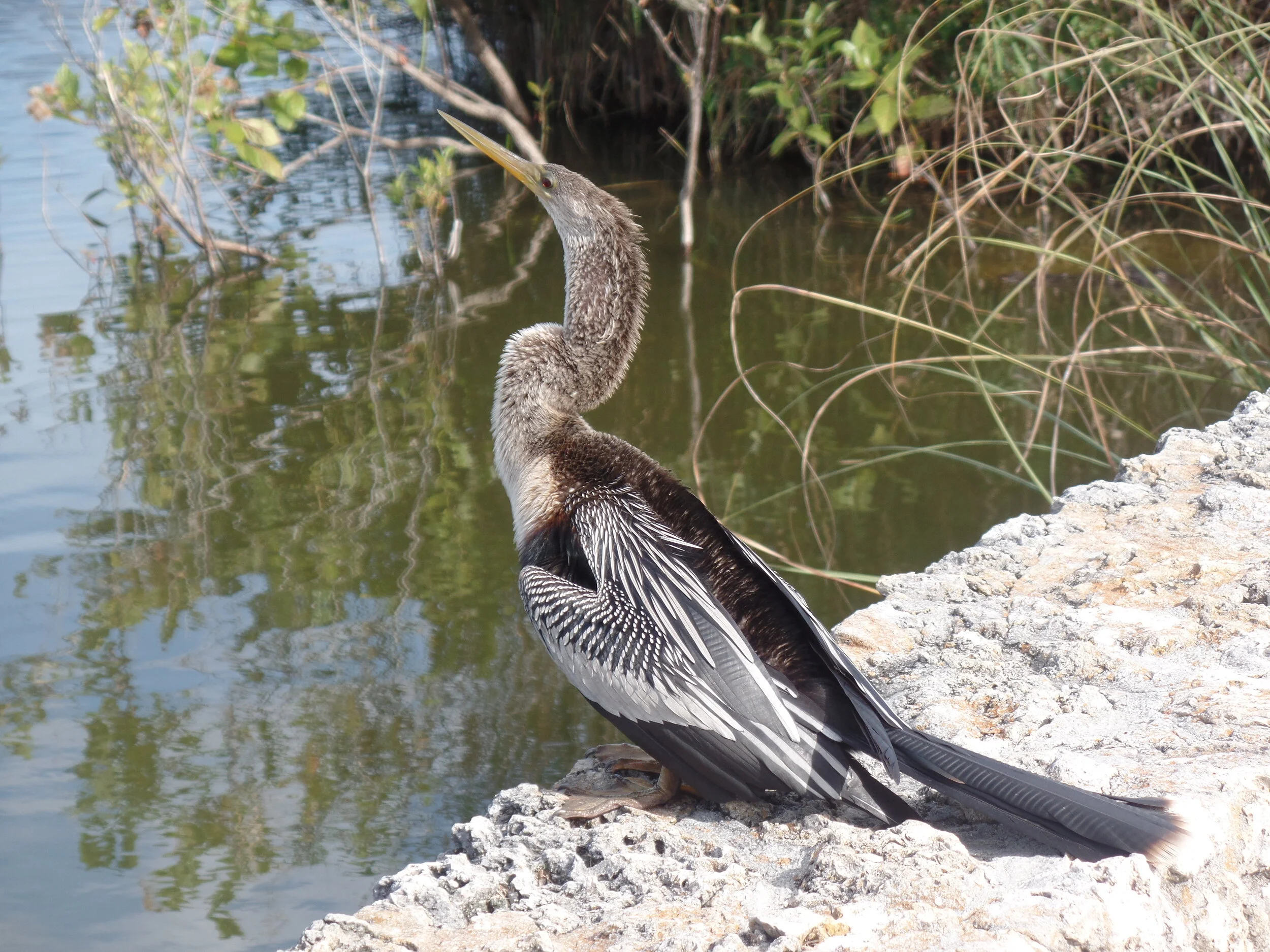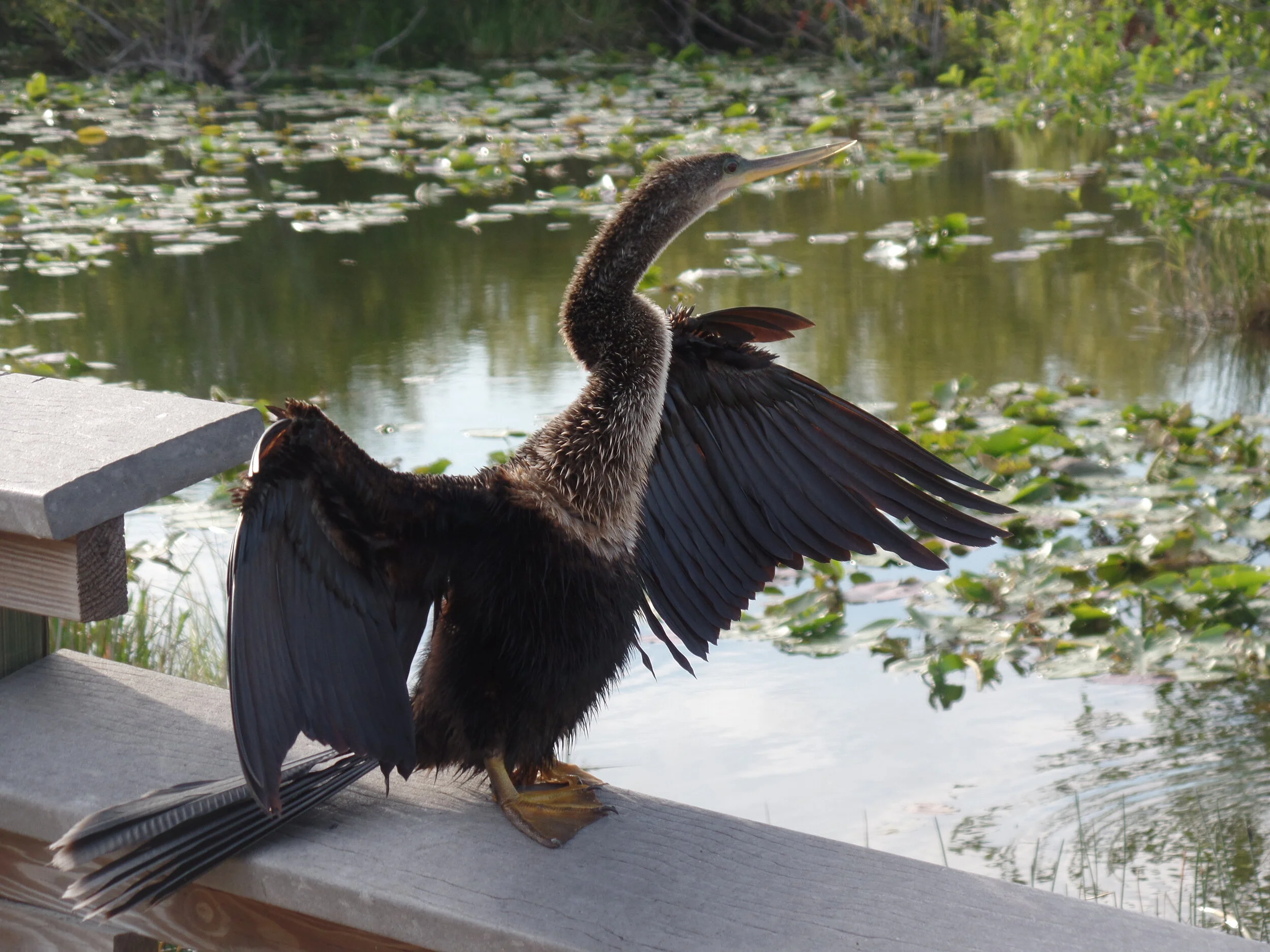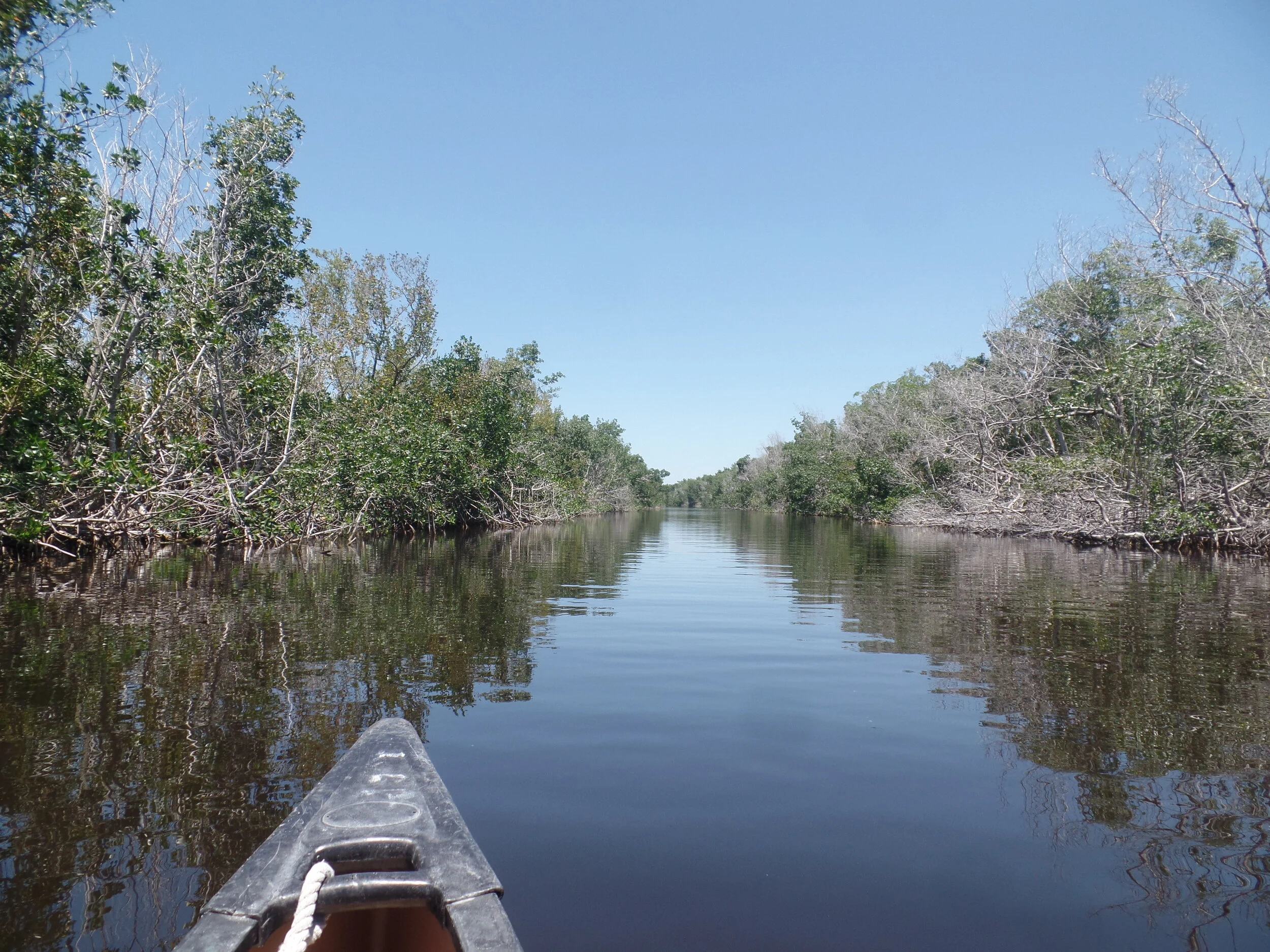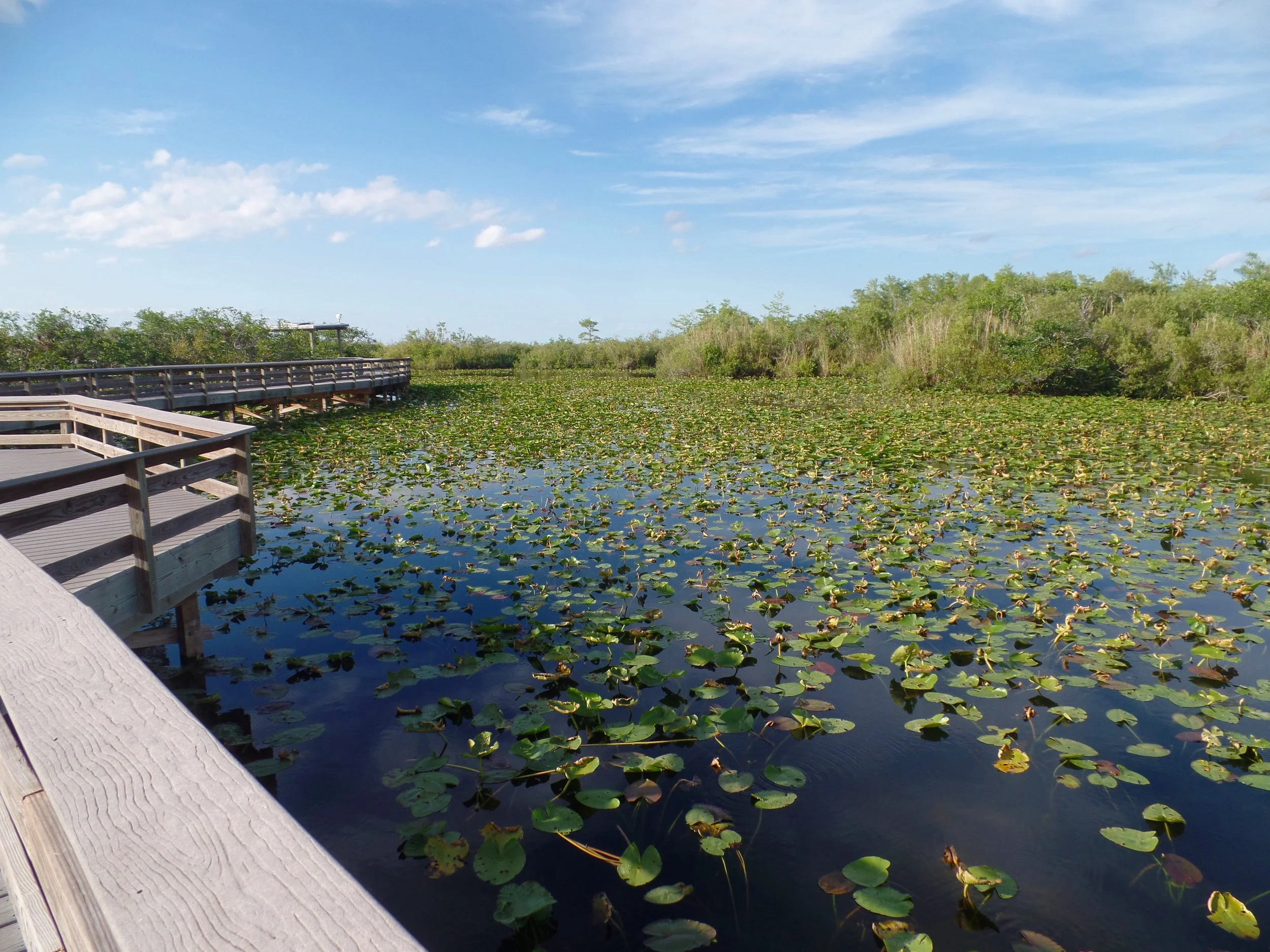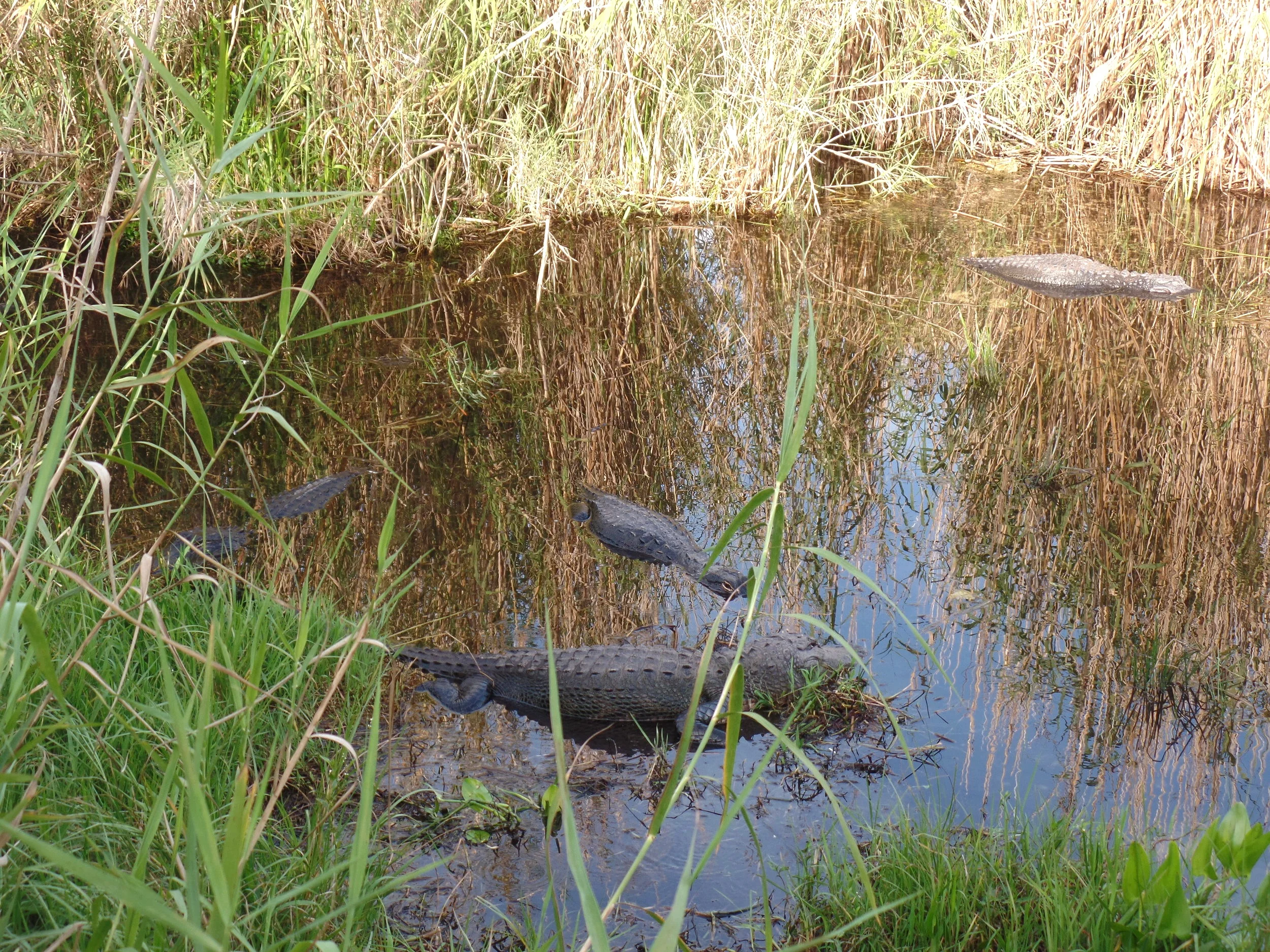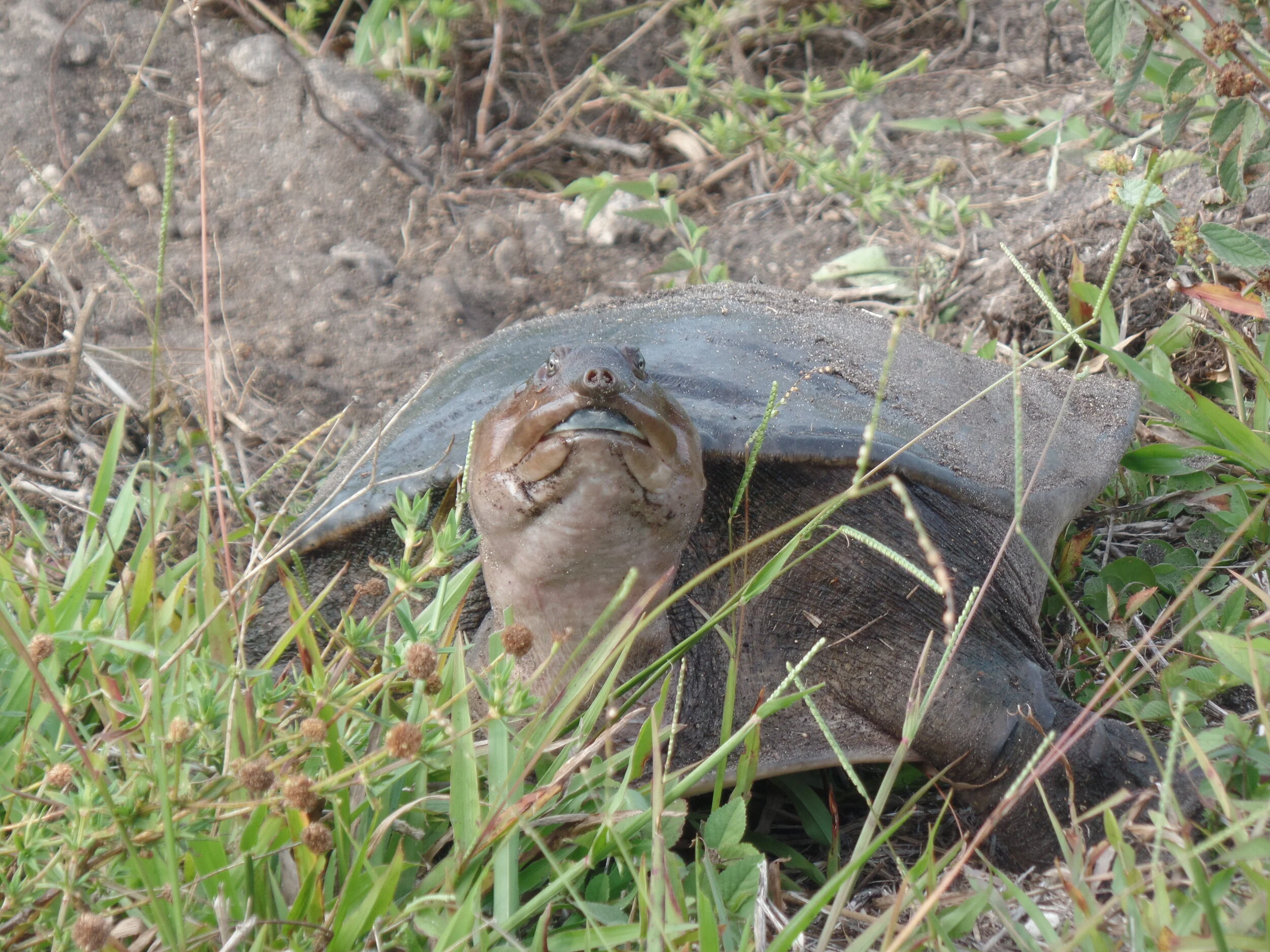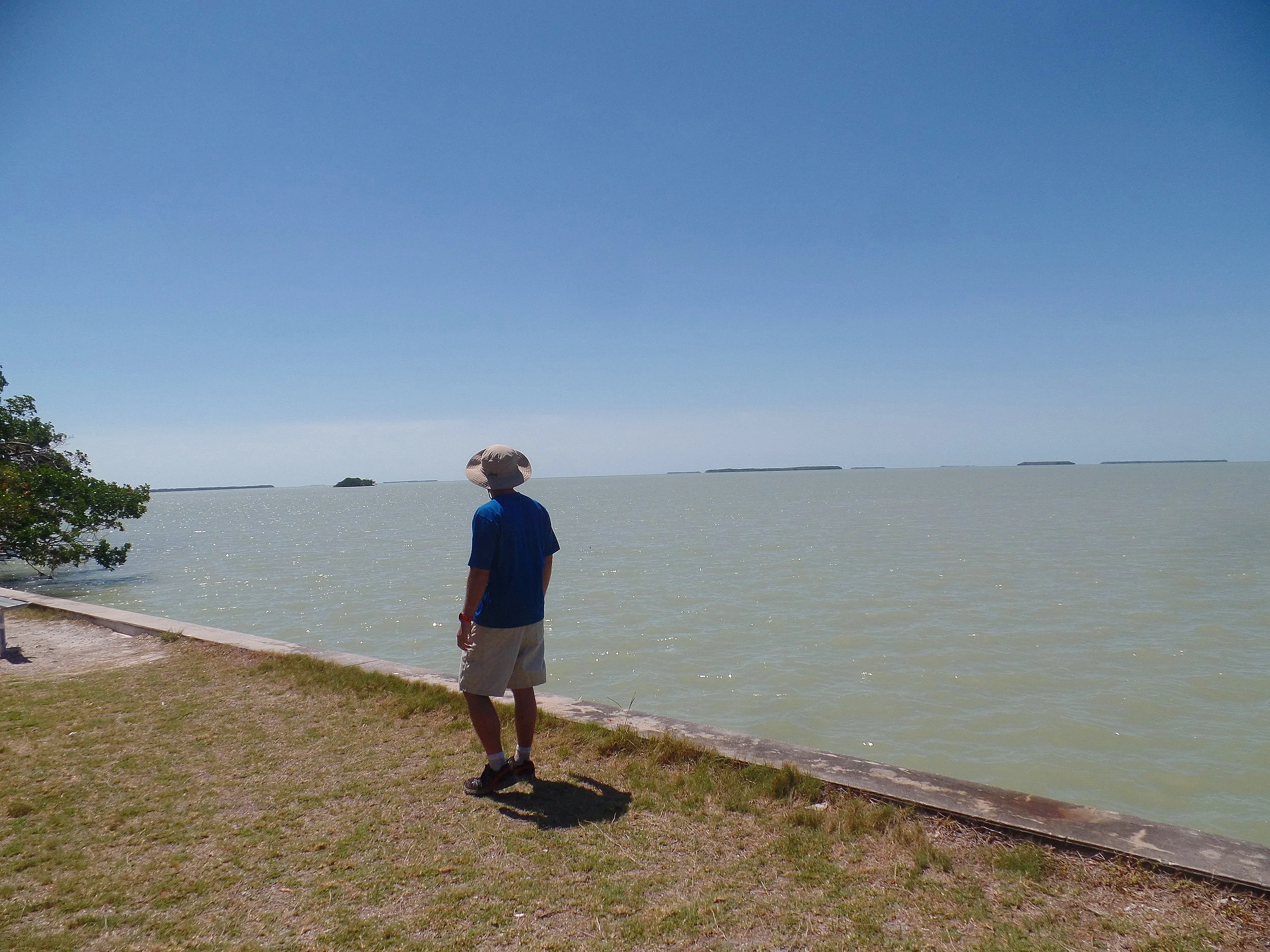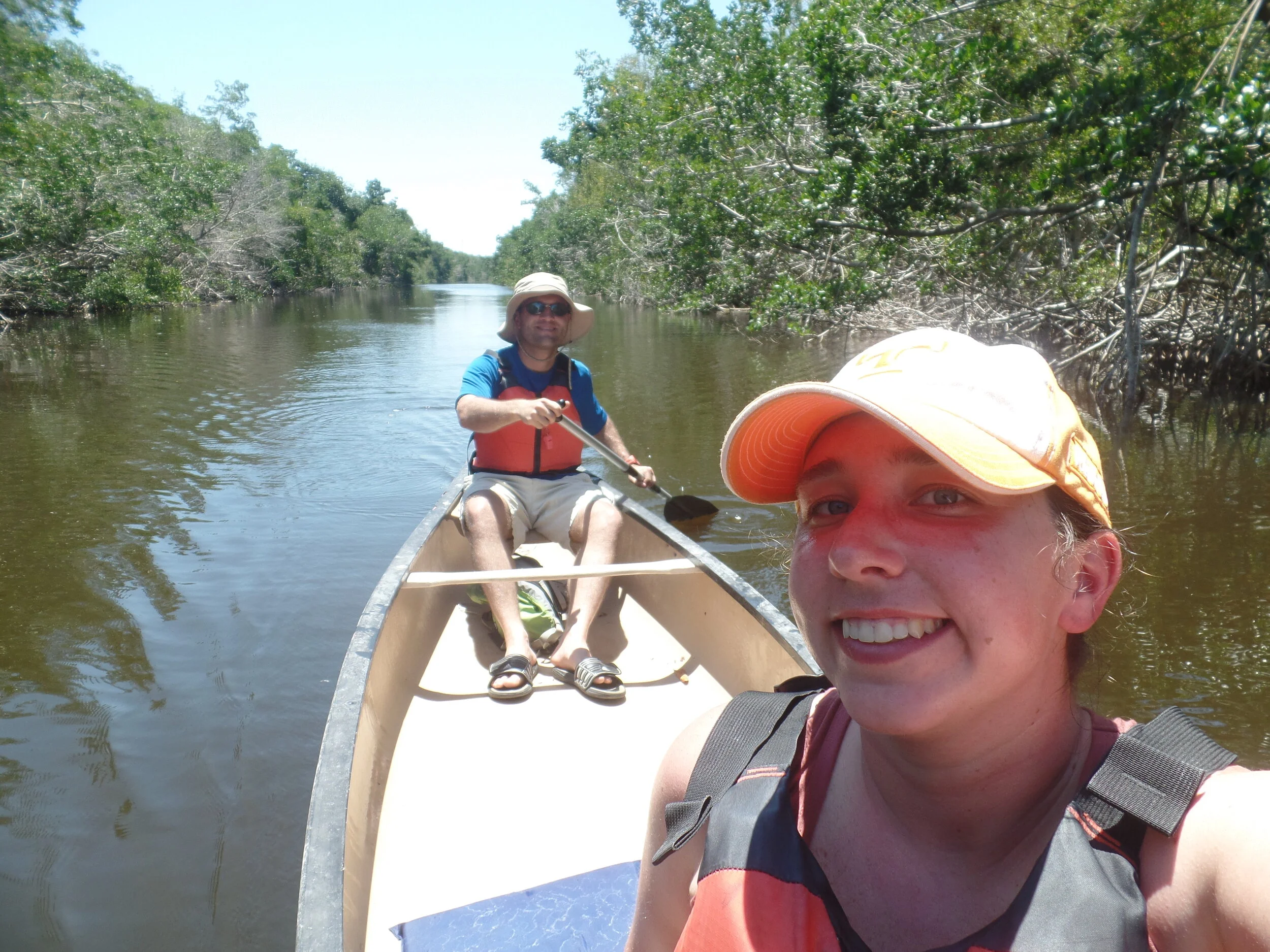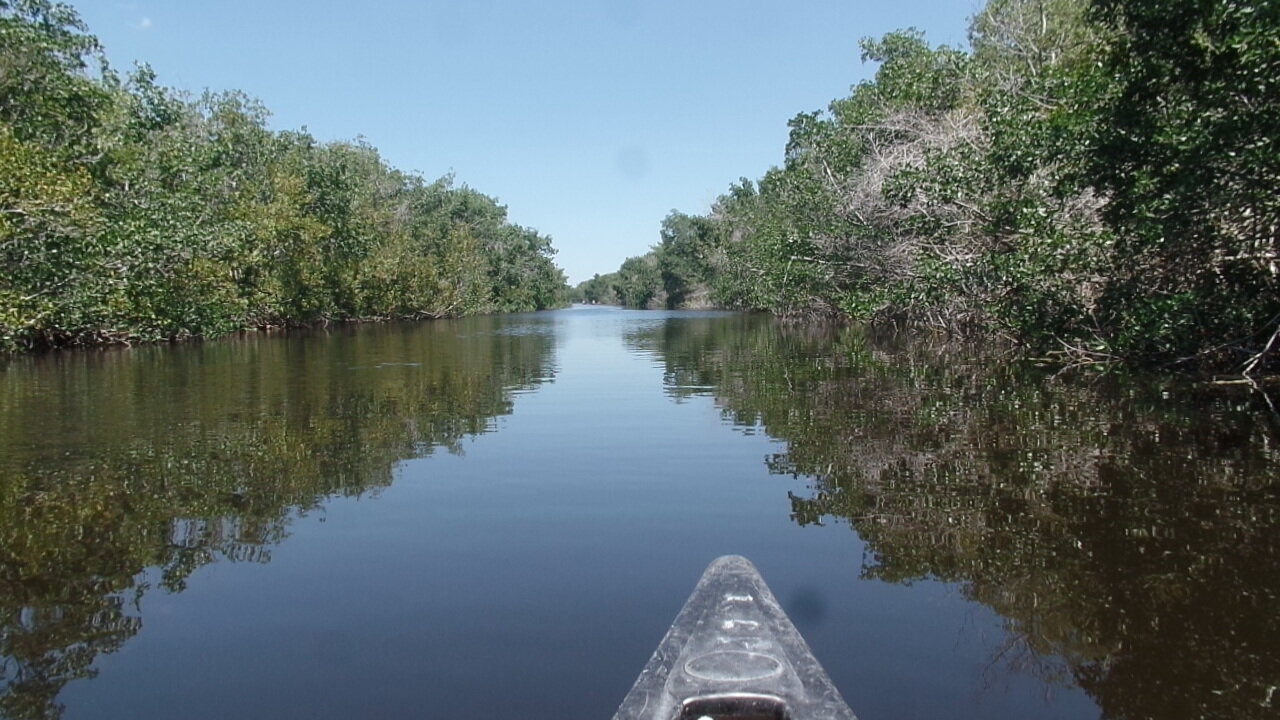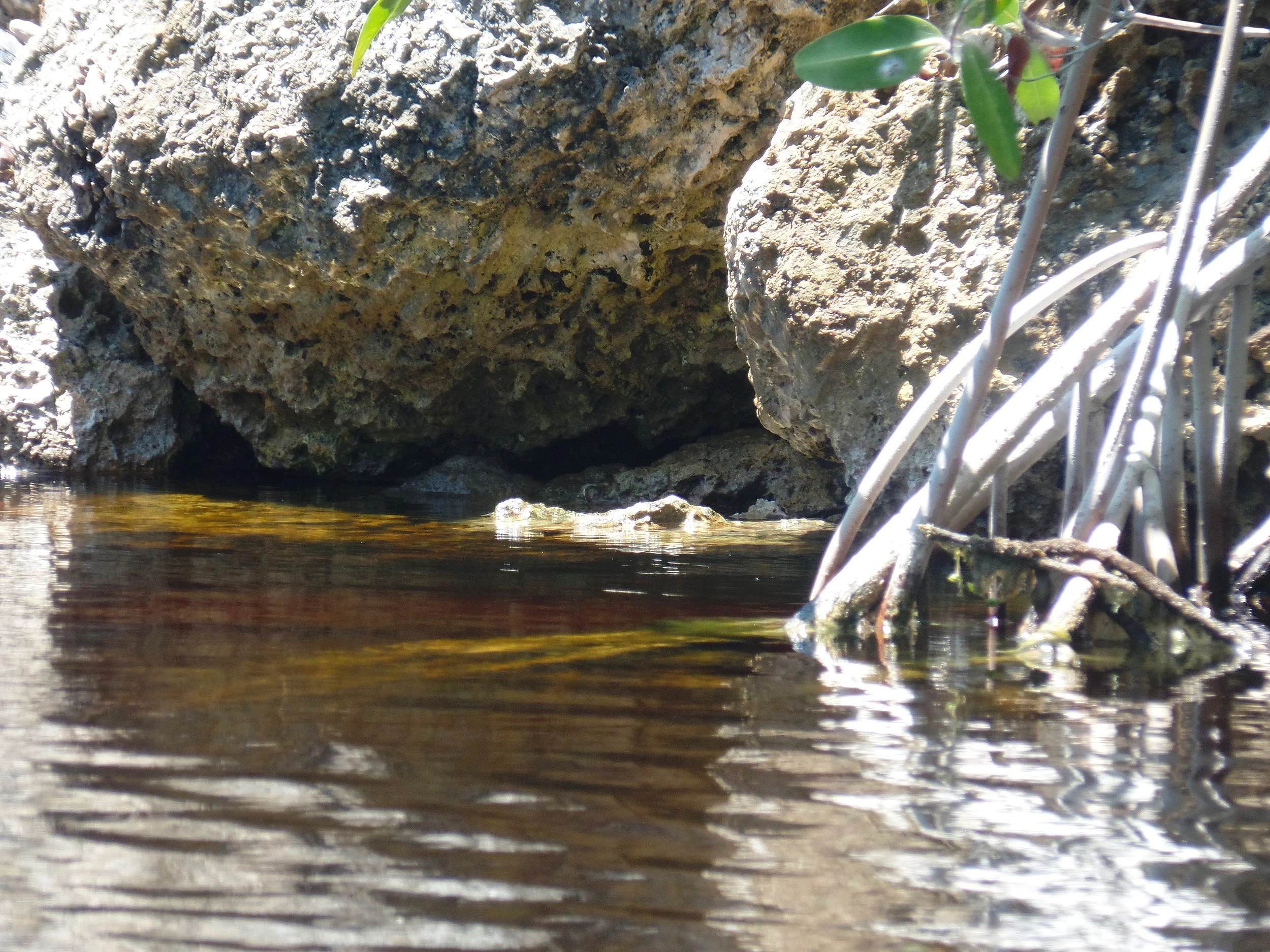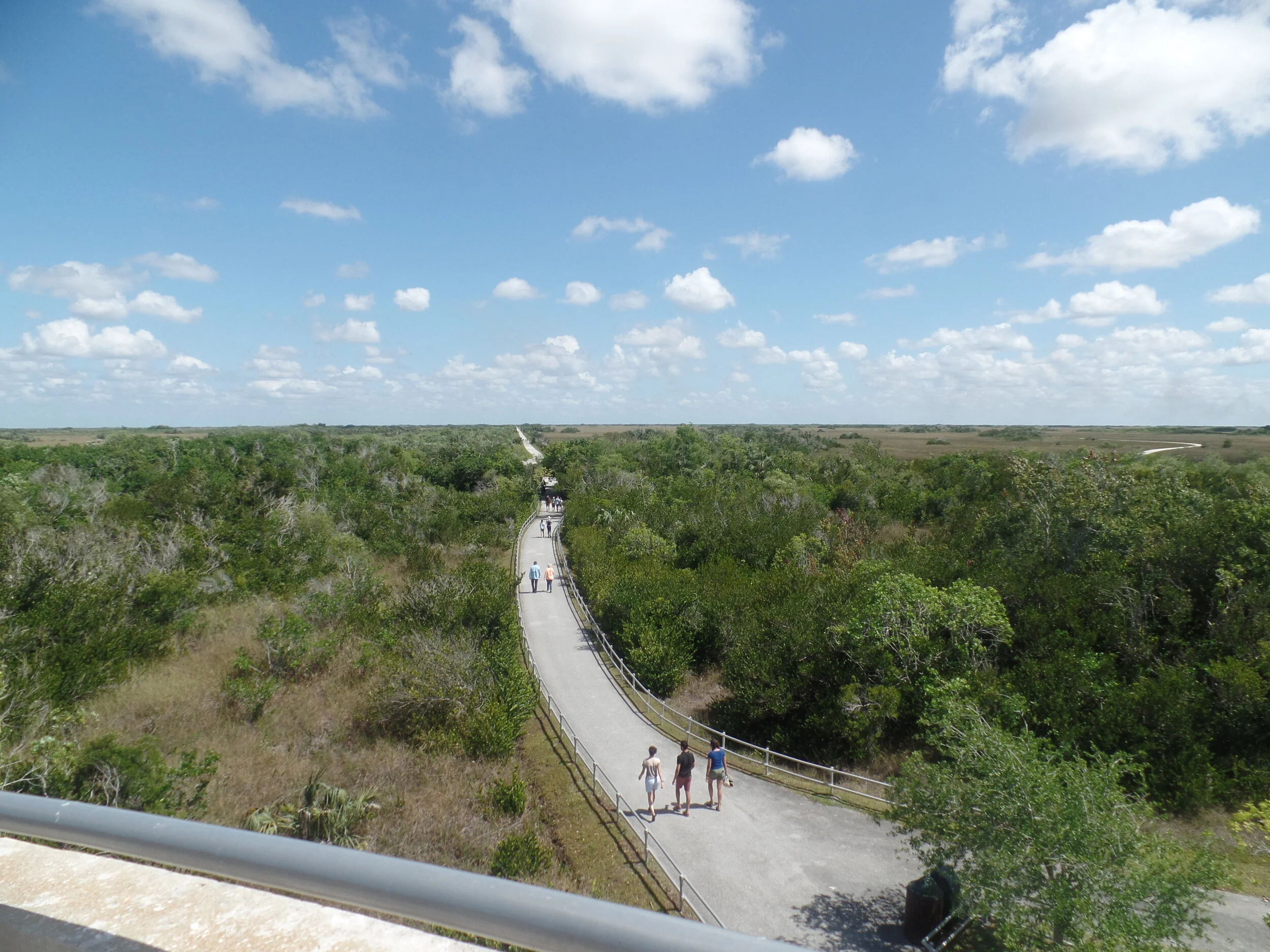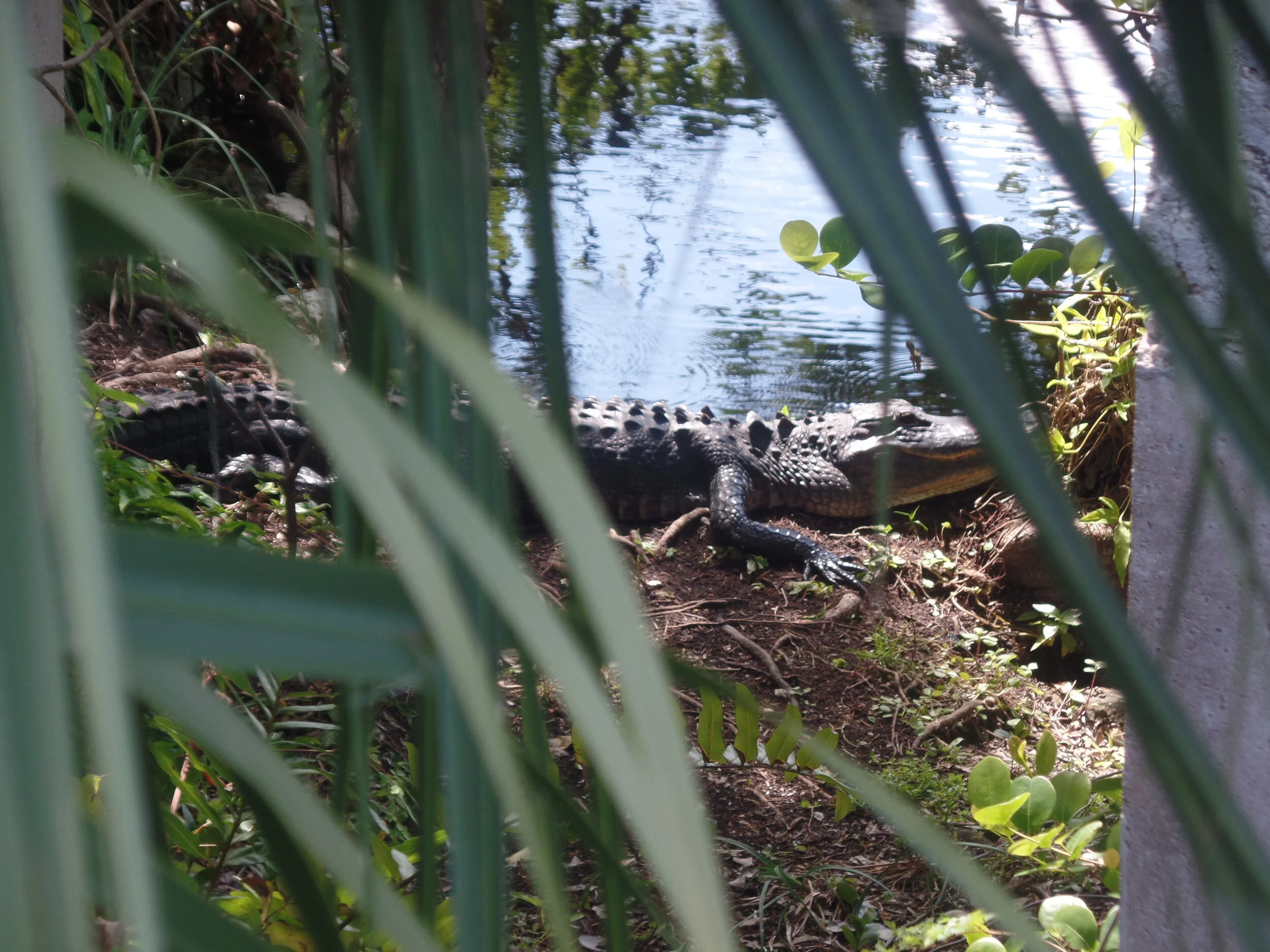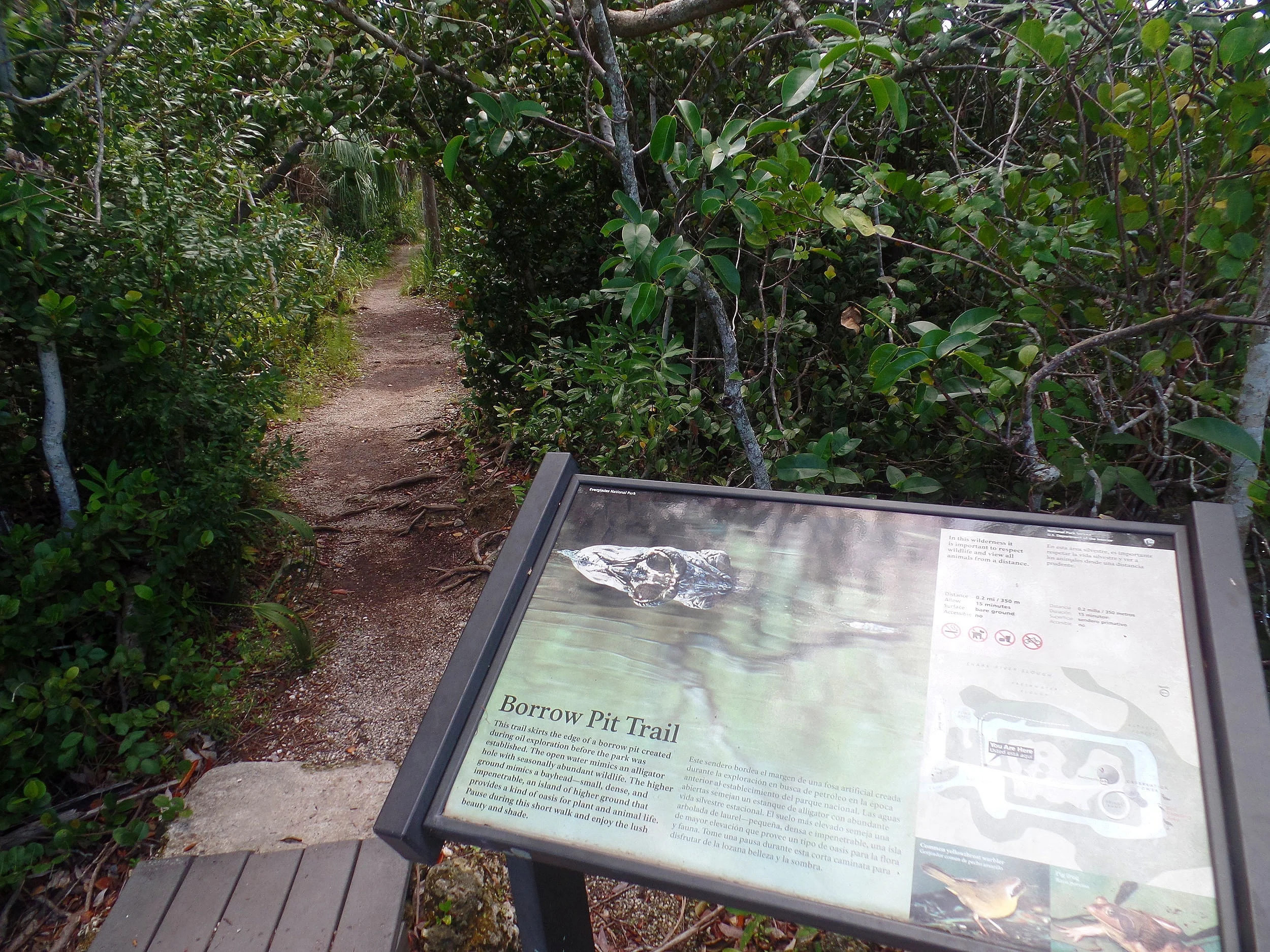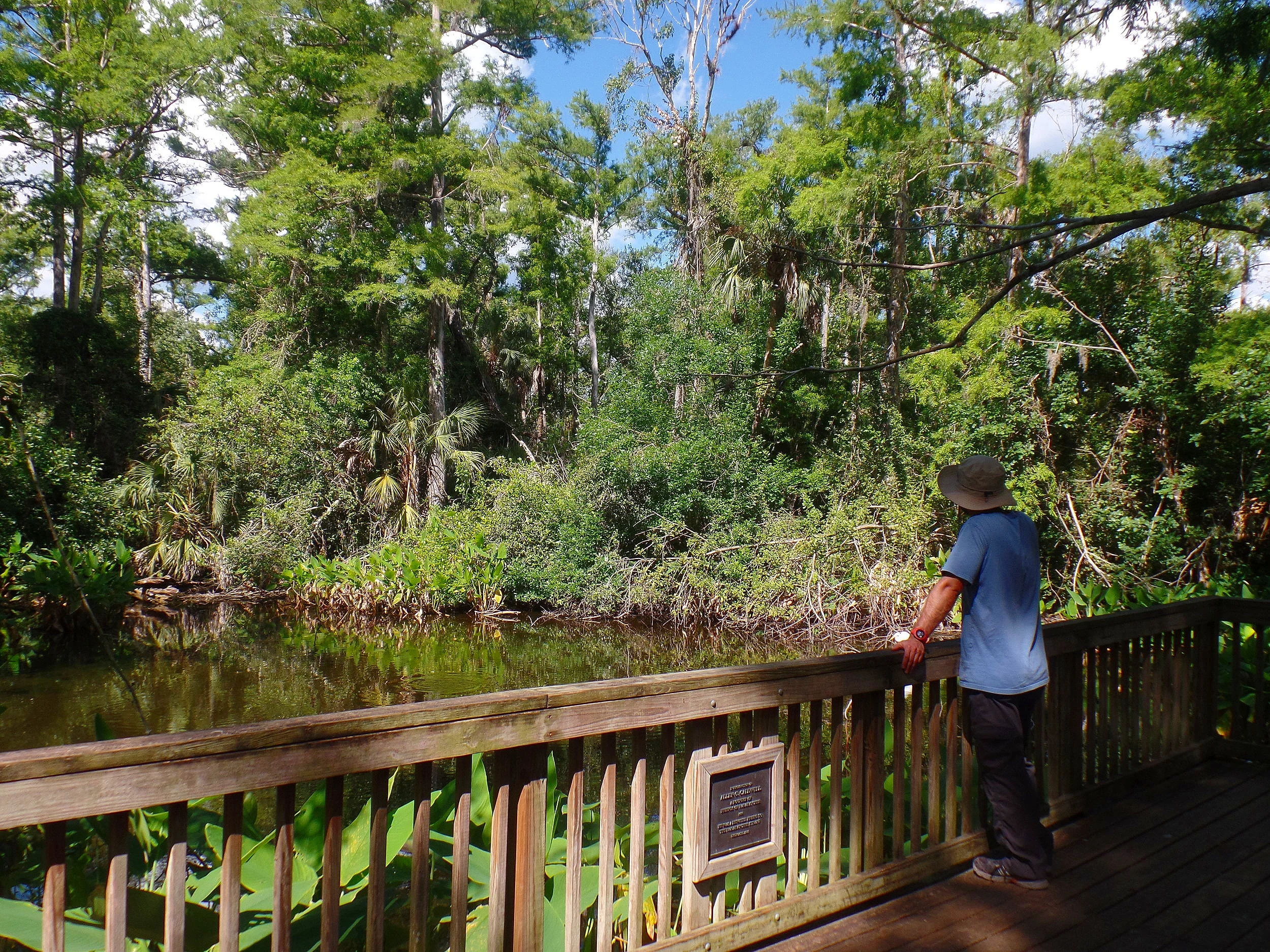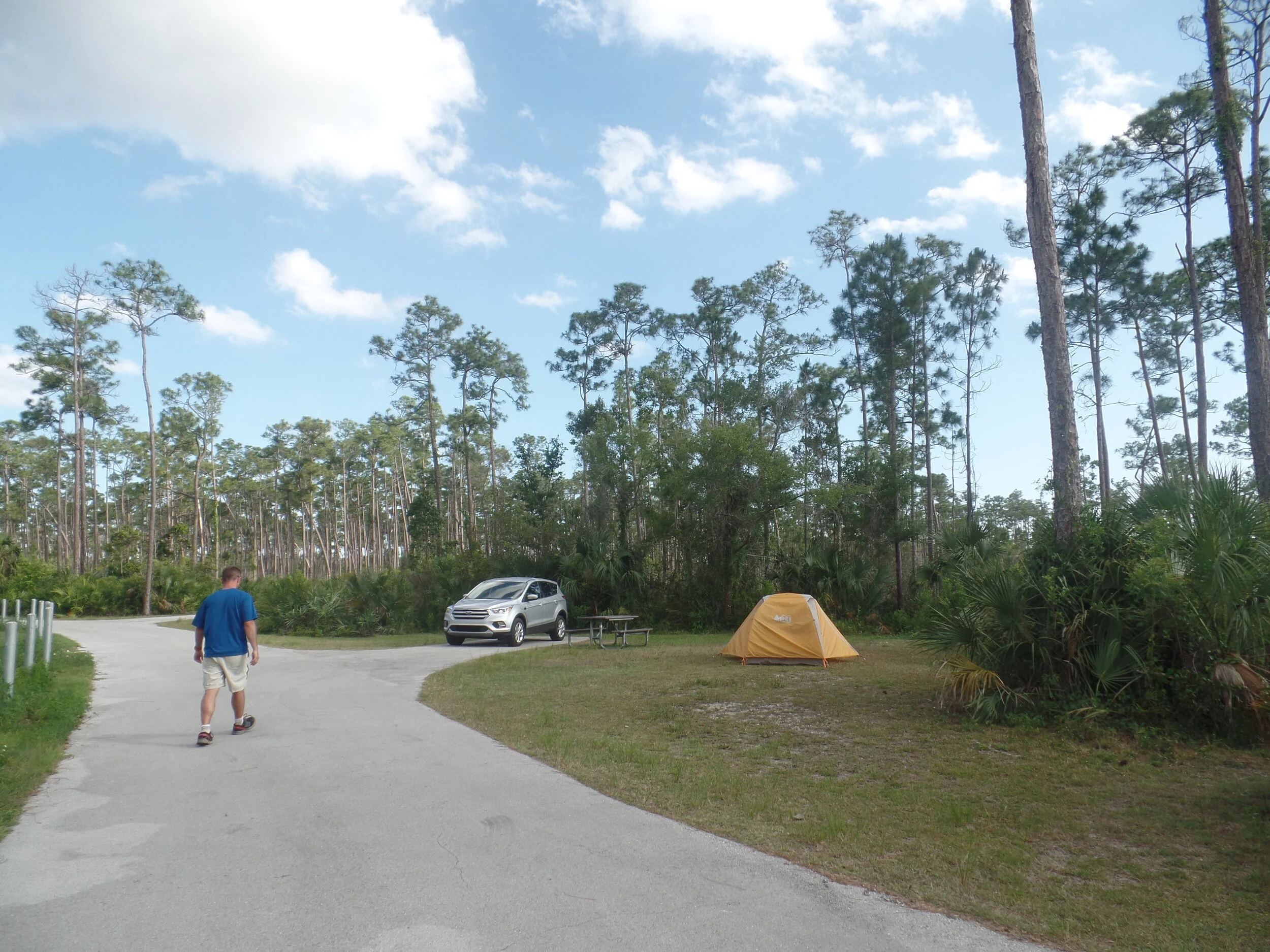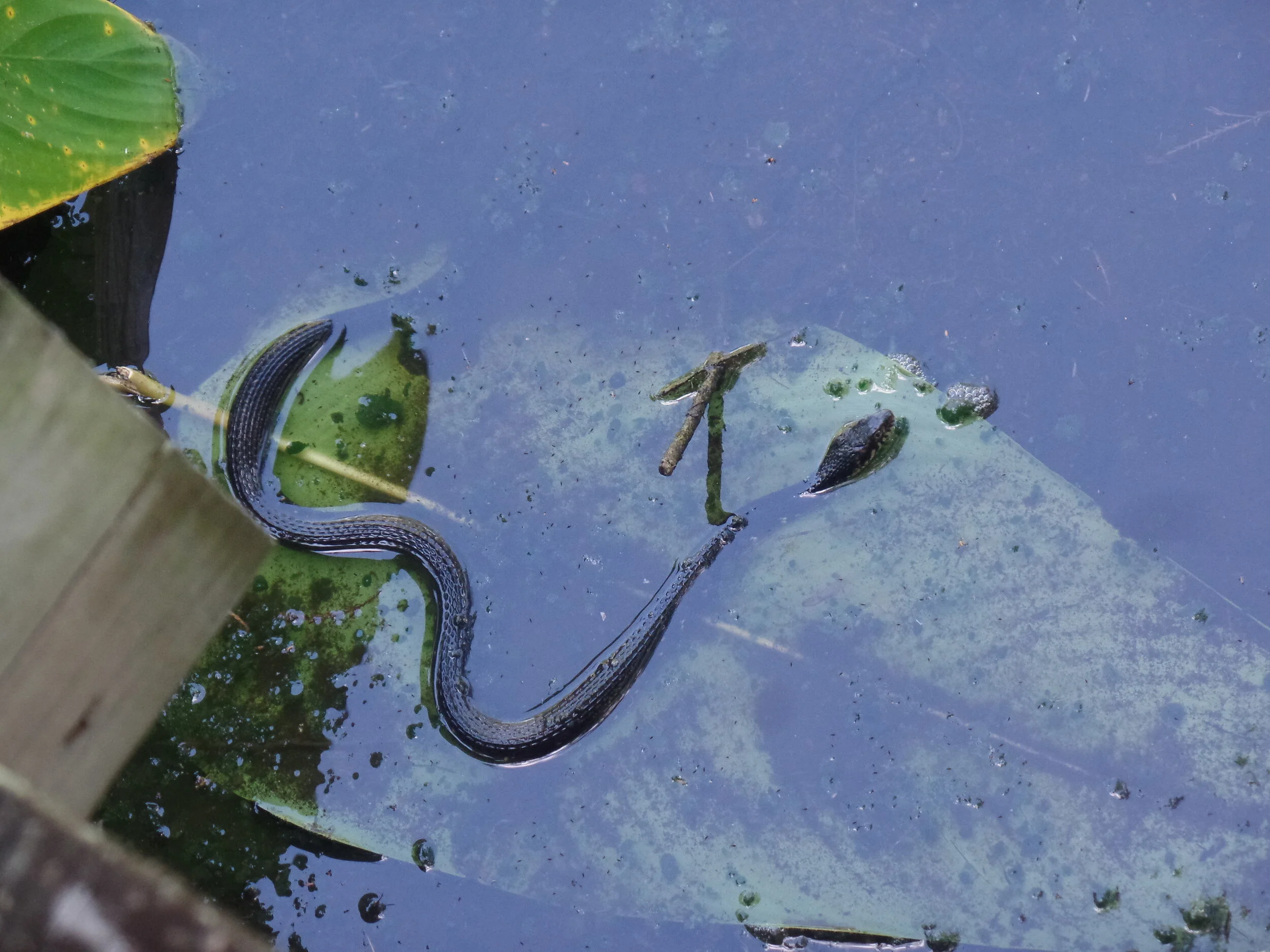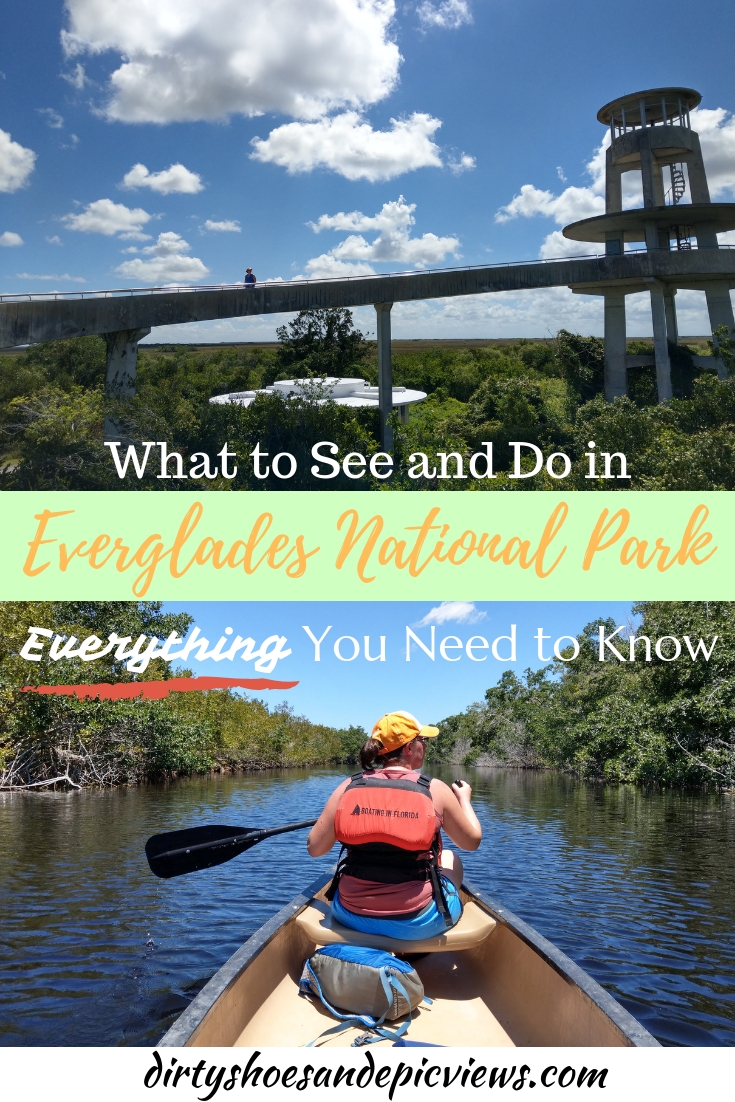Best Things to Do in Everglades National Park: Plus tips and itineraries!
If you’re looking for the best things to do in Everglades National Park, this post is for you! We’ll go over everything you need to know to plan a perfect Everglades National Park itinerary, including how to get to the Everglades, best places to go in the Everglades, the top things to do in each region of Everglades National Park, where to camp in the Everglades, and a whole lot more.
If you are planning a trip to Florida, Everglades National Park is not to be missed. While it may not be the typical National Park that we were used to (the ones with epic mountain views and summit hikes), the Everglades has its own special allure that drew us in right from the very start.
So, what’s so special about Everglades National Park? Well, for one, it’s huge. It’s the tenth largest U.S. National Park (the third largest in the continental U.S., proceeded only by Death Valley National Park and Yellowstone National Park), protecting and preserving 1.5 million acres of subtropical habitat.
Second, this habitat is home to some of the greatest biodiversity in the entire world! The park contains nine different ecosystems all in one place, each containing its own distinct flora and fauna that are showcased through various interpretive trails throughout the park. The Everglades supports several rare and endangered species, such as the ever elusive Florida Panther, the American Crocodile, and the Manatee, and literally hundreds of different bird species. In fact, we saw more wildlife in Everglades National Park than probably any other park we’ve been to! If you want to get that Amazon feel without ever leaving the United States, the Everglades is a must-see.
So yes, it is absolutely worth it to go to Everglades National Park.
Even though the Everglades are huge, only a small portion is accessible and ready for exploration by those who have a plan. That’s where we come in!
In this post, we will orient you to the park, going through each region and sharing with you all the amazing things to do in Everglades National Park. And we’ll give you all our best tips and tricks so that you can plan your own Everglades National Park itinerary, whether it’s for one day, two days, or more.
Article Contents
How to get to Everglades National Park
Best time to go to Everglades National Park
Where to go in Everglades National Park
Everglades National Park map
Best things to do in Everglades National Park: Royal Palm
Best things to do in Everglades National Park: Flamingo
Best things to do in Everglades National Park: Shark Valley
Best things to do in Everglades National Park: Gulf Coast
Things to do near Everglades National Park
Everglades National Park Itineraries
One day in Everglades National Park
Two Days in Everglades National Park
Three Days in Everglades National Park
Camping in Everglades National Park
What to pack for Everglades National Park
What else to do near Everglades National Park
How to Get to Everglades National Park
So, where is Everglades National Park? The Everglades are located on the southern tip of Florida.
If coming from out of state, the easiest, and in our experience, the least expensive option for getting to Everglades National Park is to fly into either Miami or Fort Lauderdale. Flying into Miami puts you 45-50 minutes from two of the National Park entrances, while Fort Lauderdale puts you just over an hour away. We chose to fly into Fort Lauderdale just because it was the cheapest option for us.
Either way, you will definitely need to rent a car to get to the Everglades and get around! There is no public transportation in or around the park.
How much does it cost to go to Everglades National Park?
The Everglades park pass costs $30 per vehicle and is good for 7 consecutive days. The Annual America the Beautiful Park Pass will work as well, and might be a good idea if you’re considering going to all of Florida’s National Parks in one go!
Best Time to Go to Everglades National Park
There are a few factors to consider for choosing when to go to the Everglades. But first and foremost, you need to know that Florida is known for its heat and humidity. Remember, in the Everglades you are in a subtropical climate! So, as you might guess, the best time to go to Everglades National Park is in the winter. In fact, December to April is considered peak season.
There are two main seasons in Everglades National Park…dry and wet.
The dry season in the Everglades is from November to early April, when the temperatures are a bit lower, the bugs are a little less vicious, and there isn’t a constant threat of afternoon rain and thunderstorms in the forecast. The day time temperature is typically in the mid 70s. This is the busiest season in the Everglades, and will often require advanced reservations for things like accommodations, camping, and tours.
The wet season in the Everglades is April to October. Florida summers get hot and humid… like over 90% humidity (yuck). And brief afternoon thunderstorms can be a daily occurrence. And….there are tons of mosquitos. The upside is that crowds are less in the Everglades in the wet season, but if heat and humidity slow you down (like me), summer might not be best.
Other factors to consider when deciding the best time to go to the Everglades:
Wildlife viewing in the Everglades is said to be best during the dry season. Animals, such as alligators, flock towards any remaining waterholes left during the dry season, making them easy to spot! In the wet season, as the water levels rise, the animals begin to disperse, so while I am sure you will see gators (because let’s be honest, that’s the reason you are going, right?...or was that just me?), you just won’t see them every ten seconds like we did.
Camping in the Everglades: There are two front country campgrounds, one of which closes for the wet season on April 30th. The other is open year round, but just keep in mind again, during wet season it’s, well, wet, and very buggy. We’ll talk more about camping in Everglades National Park later.
Ranger led programs sound awesome in the Everglades! We will talk more about them in a bit, but they offer talks, guided walks, night walks, guided bike rides, and even guided canoe trips! The catch is that the majority of these are only offered in the dry season from roughly November to April -ish, depending on things like water levels and staff availability. So, if any of these programs seems appealing to you, you’ll definitely want to take this into consideration when considering the best time to go to the Everglades.
Other guided tours and some visitor centers have limited to no services during the wet season. Be sure to check in advance!
Canoeing in the Everglades: If you plan on paddling in the Everglades or nearby areas, the season may matter. Water levels fluctuate across the seasons, so it is important to know the patterns in advance. If looking to paddle through the mangrove trails in the park, the dry season is the best time to go to the Everglades as the water levels are sufficient from the previous wet season rains, and the bugs are less abundant. Often, by as early as March, the dry season will have taken its toll, making some canoe trails impassable due to low water levels. Check that status of various Everglades canoe trails here.
Birds in the Everglades! Many species of birds migrate here from the North for the winter months and leave before summer. In April, we had learned at a ranger talk that we had just missed our opportunity to see the popular Roseate Spoonbill, a beautiful pink bird that upon first glimpse you might mistake for a flamingo and that I didn’t even know existed until that moment. The last ones had migrated just a few weeks before our arrival…dang!
Our overall experience visiting the Everglades in April:
We visited Everglades National Park at the end of April, so it was a transition period between the dry and wet seasons. While April is still considered within the bounds of their “busy” season, we did not experience crowds at all during our trip…it was quite pleasant! A few times, we were one of two cars in the parking lots for a trailheads along the road to Flamingo. Even the busiest trails, such as the Anhinga trail, were pretty crowd free, and reservations weren’t needed for anything. The campgrounds were basically empty.
On the flip side, it was hot. It reached the low 90s every day we were there. And the sun was brutal… like, burn you through your clothes after ten minutes kind of brutal.
The bugs were only an issue at night in the campgrounds, but nothing a little bug spray couldn’t fix.
Before arriving, the weather warned us of thunderstorms basically every day we were planning on being there, but we only experienced one actual storm, which happened in the evening hours after 6 pm (but lasted until about 11!).
Despite being at the edge of the dry season, the wildlife at the end of April was still awesome! Over the course of just a few days in the Everglades, we saw dozens and dozens of gators, tons of birds, a few crocodiles, manatees, turtles, snakes, uncomfortably large grasshoppers…you name it! Check out our post on all the Florida wildlife we saw here!
We did, however, miss opportunities for some cool ranger programs, since most of those stopped running by the beginning of April, but if you are independent and like to do your own adventure, it’s not really an issue!
Where to Go in Everglades National Park
We will say it again…the Everglades are big. They are so big that Everglades National Park has three different entrances. These entrances are far apart, serving as gateways to distinct regions of the park that do not interconnect with each other.
So, a visit to the park will require some advance planning. Let’s get oriented to the different places to go in Everglades National Park here, because this post is going to focus on all the best things to do in Everglades National Park by region!
Here, we outline each region of the Everglades, but in the next sections, we will go over each one in more detail!
Royal Palm in Everglades National Park
Royal Palm is a popular Everglades National Park entrance. It’s found in Homestead, Florida, about 65 miles south of Fort Lauderdale.
Here, you’ll find a nice visitor center and information station. From the entrance in homestead there is just one road (Main Park Road, or FL-9336) that takes you through the Royal Palm Region and then into the Flamingo Region (more on that next).
Along this road are numerous trailheads for various interpretative walks that showcase the different habitats in the Everglades, including wetland sloughs and hardwoods hammocks (if those sounds intriguing to you…don’t miss this section to learn all about them and experience them first hand!).
One of the park’s two campgrounds are also found here in Royal Palm (we’ll talk more about this when we talk about camping in Everglades National Park below!).
Flamingo in Everglades National Park
The Flamingo entrance to Everglades National Park is located 38 miles down Main Park Road from the Homestead entrance, and is actually the gateway to the southernmost point of Florida’s mainland.
In Flamingo, you can explore the open waters of the Florida Bay, or paddle deep into the twisting mangrove tunnels of the area.
Sadly, there are no Flamingos here as the name might suggest! But you may encounter some other fun wildlife that makes this saltwater habitat its home. Crocodiles, anyone?
Shark Valley in Everglades National Park
No, there aren’t any sharks here (why do the Everglades keep tricking us with their names?!), but what you will find in Shark Valley is the true heart of the Everglades.
The Shark Valley entrance of Everglades National Park is located right off of US 41, less than an hour west of Miami and about an hour and 20 minutes from Royal Palm. A journey down its 15 mile tram road will bring you up close and personal to wildlife and make the Everglades nickname of the “Sea of Grass” really come to life.
Gulf Coast in Everglades National Park
The Gulf Coast entrance to Everglades National Park is located in Everglades City, about 50 minutes west of Shark Valley. This is the gateway to the western portion of the park. There aren’t really any hiking or interpretive trails here. Instead, it’s used mostly as a starting point for paddling or boating adventures. Popular trips are to the Ten Thousand Islands or through the interior mangrove estuaries.
So, which is the best entrance to Everglades National Park?
That depends! For us, our favorite places in Everglades National Park were found in Royal Palm and Shark Valley. Check out our list of best things to do in each region to help you decide where you want to prioritize for your own Everglades National Park itinerary!
Everglades National Park Map
Now that you know what places to go in Everglades National Park, let’s take a look at them on a map so you know where to go and can plan out your Everglades itinerary!
Map of Everglades National Park taken from the park brochure
Everglades National Park driving distances
Royal Palm to Flamingo: 45 minutes
Royal Palm to Shark Valley: 1 hour 20 minutes
Shark Valley to Gulf Coast: 50 minutes
Best Things to Do in Everglades National Park: Royal Palm
Now that we’re oriented to the park and its regions, let’s get into the good stuff…all the best things to do in Everglades National Park!
We’ll start with the best things to do in Royal Palm in the Everglades, as this is a very popular region and a must-see section of the park.
Walk along the Anhinga Trail in Everglades National Park
Taking a walk along the Anhinga Trail is definitely one of the essential things to do in Everglades National Park, and it is certainly one of the most popular.
The Anhinga Trail is an easy flat walking path that cuts through a sawgrass marsh that is absolutely teeming with wildlife.
Major hint: If you want to see alligators in the Everglades…this is the spot to go. You’re pretty much guaranteed to see them here. This was our very first stop in the Everglades, and we saw more than a dozen gators within the first hour of our time here, all of them along this trail. When we went, there were soooo many gators just sunning themselves along the banks of the water, or swimming eerily with their heads poked out above the surface.
There’s more than just gators here, though. A lot more. So keep a sharp eye out!
One bird you’re likely to spot pretty readily is the trail’s namesake…the Anhinga.
The Anhinga is also known as the Piano Bird, and with that fact in mind, they become pretty easy to identify. They are called this because when assuming a spread-wing posture, which it commonly does to dry its wings and thermoregulate, the feathers on its wings have a white coloration that contrasts with intermingling darker feathers to give it the look of keys on a piano. This makes it easy to tell when you are looking at an Anhinga, and on the Anhinga Trail, as the name suggests, you won’t be hard pressed to find these guys nesting in the trees or sunning themselves alongside the trail.
How to get to the Anhinga Trail in the Everglades: The Anhinga Trail is located just a few miles past the visitor center in Royal Palm. A well- marked sign will let you know when you’re there. The parking lot has a restroom and water refill stations. The Anhinga Trail is easily accessible, as it is mostly a boardwalk that goes over the marshy habitat, and it’s less than a mile to cover the entire loop.
Our biggest suggestion is to take it slow and really take your time to spot all the life around you. It’s a short path but we spent well over an hour here, and actually came back multiple times during our stay in the Everglades! A lot of wildlife tends to congregate at the pond that is right by the parking lot, so you really don’t have to go too far from your car to get right to the action, but it’s still fun to walk the entire trail to give you a greater opportunity to see more.
Fun tip! Check out the Gumbo Limbo Trail while you’re here.
Often overlooked because of the popularity of the Anhinga Trail, the Gumbo Limbo Trail is a short half mile loop through a stand of Gumbo Limbo trees.
And just in case you’re wondering what a Gumbo Limbo tree is (because I certainly was!)… Gumbo Limbos are unique large trees that start their branches low off the ground and have a shiny smooth red bark which makes them tolerant of high hurricane-force winds. I bonded with this tree as a Florida tourist purely for its nickname. When the bark peels back, it resembles red sunburnt skin, so the tree is also affectionately known as the “Tourist Tree”, which I can relate after my time in Florida! Ironically, this trail of Gumbo Limbo’s provides you with some much- needed shade from that strong Florida sun.
Most people pass over this during their visit to the Anhinga Trail, so chances are you’ll have this one to yourself. We didn’t see any wildlife as we walked along this trail other than a ton of tiny lizards scurrying across the path as we came by, but we kind of just cruised through it and didn’t really look. My guess is it is definitely there if you just take your time and keep your eyes peeled!
Visit the HM69 Nike Missile Site
In stark contrast to the natural wonders of the Everglades is an opportunity to visit an historic missile site that serves as a relic of the Cold War. You can take a ranger guided tour or visit the site on your own, keeping in mind that it’s open usually during the dry winter months.
Admittedly, we didn’t stop here as we were more interested in the hikes, trails, and wildlife, so we can’t say too much about it, but it’s definitely something to look into if you are a big history buff!
Learn about the Everglades on an interpretive trail
As you make your way down the 38-mile-long Main Park Road from Royal Palm towards Flamingo, there are three other short interpretive trails in Everglades National Park that are worth making a quick pitstop for.
The Pinelands Trail is a 0.4-mile flat paved walking path that goes through a forest of pines and palmetto trees. When we went, the information kiosk at the start of the trail was swarming with bumblebees, so just be aware. About half way through the loop, you enter an area where the forest gets a bit denser, and you’ll notice signs informing you to look around for tree snails that make these trees their home. This trail will also introduce you to solution holes! These depressions collect water and serve as a refuge for aquatic animals in the dry season.
The Pahayokee Trail is another easy 0.16-mile boardwalk loop that brings you up to an observation platform overlooking a sawgrass prairie and into the heart of the “river of grass”. Look closely and you’re bound to see wildlife, such as birds and even gators.
The Mahogany Hammock Trail is a half mile boardwalk that travels through a hardwood hammock whose dense vegetation gives it more of a jungle-like feel. This trail is apparently good for spotting owls, but we weren’t so lucky despite our effort and patience.
These Everglades hiking trails are definitely not as popular as the Anhinga Trail. The Anhinga Trail is just so easy to see wildlife. But I recommend stopping at at least one of these other interpretive trails. Taking a walk along one of these trails is a great thing to do in Everglades National Park for quite a few reasons…you’ll learn a lot, see different habitats, have a chance at spotting more wildlife, and it will be much more quiet and less crowded. We were often the only ones out on these trails and the parking lots were empty or nearly empty when we got to them.
All of these trails are flat for the most part, and super easy, so it’s easy to fly through them if you’re in a rush, but, if you have the time, we always suggest taking your time and keeping your eyes peeled!
Stop for a picnic in Everglades National Park
As you make your way down Main Park Road towards Flamingo, there are a few different picnic stops along the way.
Paurotis Pond is a nice pit stop overlooking a pond where alligators may be lurking through the waters. It’s a nice stopping point for lunch as you head down to Flamingo, which is the next region on our list!
Attend a ranger program in Everglades National Park
Attending a ranger program or ranger talk is one of the best things you can do in Everglades National Park! And because it’s something we normally don’t look at doing in most parks, this is saying something coming from us. And while we are only going to mention this here, this applies to all areas of the park, not just for Royal Palm.
In every region of the Everglades, the park offers a ton of really cool ranger programs…night walks, canoe trips, slough slogging, and bike trips, just to name a few! Slough slogging sounds particularly fun…this is where you follow your guide through knee deep water in stands of Cypress Trees. How fun is that? Check here for the different programs offered in each area of the park.
Important! If you want to take advantage of these Everglades ranger programs, be sure to plan your trip for the dry season, preferably before April, since most programs stop in April at the start of the wet season. We went at the end of April and there were limited options. They do still offer ranger talks throughout the year, which are still a great option. We attended a bird talk at the Shark Valley Visitor Center. Did you know that vultures don’t have feathers on their head specifically so they can dig around in their food without getting their feathers sticky and dirty? This is just the kind of facts you’ll learn…you’re welcome! Be sure to check the park calendar to determine when different programs are begin offered.
Best Things to Do in Everglades National Park: Flamingo
Flamingo is the area of Everglades National Park located at the very end of Main Park Road (about 38 miles from the Royal Palm entrance. The very end constitutes the southernmost point of Florida’s mainland.
While it seems like there not be much here, there are several noteworthy things to do in this part of the Everglades!
Hike along the trails in Flamingo
A great thing to do in Flamingo in the Everglades is to take a walk along a hiking trail. There are several types of trails in this area, ranging from short strolls to longer hikes.
Longer walking trails in Flamingo
As you travel down the Main Park Road into Flamingo, you’ll have more opportunities to get out and explore the Everglades by foot. The hiking trails closer to Flamingo are a bit longer than those found in Royal Palm, but they are still relatively flat and easy.
Several out and back trails begin along the Main Park Road and wind their way through different habitats, including hardwood hammocks and coastal prairies, and end at the shores of the Florida Bay. These include:
Snake Bight (3.2 miles)
Rowdy Bend (5.2 miles)
Christian Point (3.6 miles)
These trails are open, but they are unmaintained, as they go through a critical habitat for a special species of flower called the Cape Sable Thoroughwort.
Admittedly, we didn’t do any of these trails and we wanted to spend our time on other things in the Flamingo area and we walked along all of the trails in the Royal Palm area, but if you decide to walk along any of these, let us know how they are!
Short strolls in Flamingo
If you don’t want to do a longer hike along an unmaintained trail, check out two shorter pond strolls, one around West Lake, and one around Eco Pond.
Both trails are half mile loops around lakes and through lake-side mangrove forest.
Walks along Florida Bay in Flamingo
Another option for getting out and stretching the legs is hiking along the Florida Bay in the Everglades, found at the very end of Park Main Road.
Guy Bradley is a short 2 mile out and back trail that goes to Florida’s coast
The Coastal Prairie Trail is for those looking for a longer hike. This hike in Everglades National Park is 7.5 miles one way out to a point called Clubhouse Beach. You can backcountry camp here if you wish (we’ll get more into backcountry camping in the Everglades in just a bit!).
Spot Wildlife at the Flamingo Visitor Center and Marina
Main Park Road in the Everglades ends in Flamingo at the Flamingo Visitor Center, marina, and campground.
This is a great spot to just walk around the marina and bay. The wildlife here is a little different than that found in Royal Palm, because it’s a salt water habitat.
Here, alligators will be replaced with the more ominous and imposing crocodile (it’s kinda crazy to see one up close!), and it’s common to also spot manatees bobbing along in the marina.
Canoe in Everglades National Park
A very popular thing to do in Everglades National Park is to paddle and explore the Everglades via canoe. Canoeing is a great way to experience the swamps and marshes of the Everglades up close, get a perspective of the park that you couldn’t otherwise from just an interpretive trail or from the car, and have some possibly close up views of wildlife. As you can imagine, it would be quite an experience to be paddling through mangrove swamps while alligators bask on the nearby banks as you float by just mere feet away!
If the thought of sharing the waters with alligators and crocodiles doesn’t scare you away, then Flamingo is a great place to canoe in the Everglades. Aside from the Gulf Coast (which we talk about below), Flamingo is where you’ll find the most opportunities for paddling. The canoe trails found here range from short trips that take only a few hours and are best for beginner paddlers, and trips that last from a whole day to an entire week.
Really, the possibilities for canoeing in Everglades National Park are endless, as there is a never-ending maze of waterways and complex mangrove tunnels. Because of these complex canoe trails in the Everglades, paddling is an activity where you really need to know your skill level and your limits. If you want to go on a multiday trip, or even a just a half day trip but through twisting mangrove tunnels, you want to make sure you have a map, know how to read the water and the tides, and know how to use nautical charts for navigation.
Luckily, for beginners, or for those just looking for a quick trip without complex navigation, there are a few short canoe trails in the Everglades that take just a few hours and are well marked with navigational markers along the trail, making them quite suitable for beginners.
Let’s go over some of the important points here about canoeing in Everglades National Park!
Where to get a canoe in Everglades National Park
Unfortunately, canoeing in the Everglades might be a bit tricky, especially for those who have flown in from elsewhere and don’t have their own canoe. Here are four options for those looking to canoe in Everglades National Park:
You can bring your own canoe, which, if you flew into Florida, is not a likely possibility.
You can rent a canoe in Everglades National Park from Everglades Guest Services. This is a store and canoe/kayak concessioner located right at the Flamingo Marina. Canoes go for $20 for a two hour rental or $28 for a four hour rental…not bad! Renting does limit you, however. From the marina, your two options are to either paddle out in the Florida Bay waters, mostly sticking along the shore to avoid dangerous ocean waters, or you can paddle up Buttonwood Canal, a mangrove waterway that travels back up towards the interior of the park.
Everglades Guest Services does offer one additional option for those not interested in the canal or Florida Bay. A canoe trail called 9 Mile Pond is located a few miles back up the Main Park Road. The concessioner keeps several canoes here, and if you chose to paddle here, they will give you the code for unlocking the canoe so that you can launch it yourself. This requires a mandatory 4 hour canoe rental, as that’s about how long it will take to complete the paddling trail.
There are some private canoe rental companies outside of the Everglades National Park that will rent you a canoe and, for an extra fee, will transport the canoe to and from the launch site. This will allow you to have more options to choose from.
The last option for canoeing in Everglades National Park is to go on a guided paddling tour, which would be arranged with a private company outside of the park, or, if you are in the prime winter season, with a guided ranger tour.
When is the best time to canoe in Everglades National Park?
The best time for a paddling trip in the Everglades is in the winter (dry) season. If paddling through the mangroves and marshy creeks, the bugs and heat will take away from any enjoyment during the summer. Plus, towards the end of the dry season, sometimes as early as March, some, but not all, of the paddling trails’ water levels are too low for paddling, so be sure to do you research on this beforehand.
The best canoe trails in Everglades National Park for beginners
If you’re a beginner, or just unconfident with a longer trip in alligator-infested waters (totally understandable!), which canoe trail in Everglades National Park should you paddle? There are a few beginner- friendly canoe trails in the Everglades located in Flamingo.
Nine mile pond, located just off the Main Park Road, is a 5 mile loop trail that takes an average of four hours to paddle. It is well marked with PVC markers and winds through several mangrove islands around the pond, giving you a good mix of mangrove tunnels and open marsh pond.
Hell’s Bay is a famous canoe trail in Everglades National Park that also starts off of Main Park Road. It gets its intimidating name because it’s supposedly “Hell to get into and Hell to get out of”! You can actually see right from the road that the trail immediately begins in a dense mangrove tunnel that does look pretty tricky to start in. And for a popular paddling day trip in the Everglades, you’ll be weaving your way through an impossible maze of mangroves for about a 10 mile round trip out and back trip to the Hell’s Bay Chickee.
The Noble Hammock Trail launch site is nearly across the street from the Hell’s Bay launch and is an equally mangrove-filled trail but for just a short two mile loop.
The best beginner-friendly canoe trail in Everglades National Park is definitely the Buttonwood Canal, and this is what we did, mostly out of convenience, as we had to rent our canoe from the park. The Buttonwood Canal in Everglades National Park is a wide canal lined on either side by dense mangrove forest, and is frequented by paddlers and motorboats alike on their way into and out of Coot Bay. It’s literally impossible to get lost on this one!
Canoeing the Buttonwood Canal is a great thing to do in Everglades National Park!
Here are some good tips for canoeing on Buttonwood Canal in the Everglades so that you can learn from our experience!
We suggest getting a four-hour canoe rental over a two hour rental. We were told the trip down the canal to the turnaround point (Coot Bay) and back could be done in two hours, so we got the two-hour rental thinking we wouldn’t have an issue. What we ended up realizing is sure, two hours is good if you’re constantly and consistently paddling and not really resting or taking time to enjoy what’s around you. It took us a little longer than planned to get out to Coot Bay since we were hunting for crocodiles along the canal banks and taking our time. On the way back, we had to paddle hard with little rest to make it back in our designated time frame, and we just managed to get back in the two-hour time frame plus the 15 minute grace period. If you’re late, instead of just charging you an extra hour, they charge you a $50 late fee! So, for $8 more, you have the canoe for twice as long and can take your time, hunt for crocodiles, and have a peaceful trip down the canal.
Speaking of crocodiles, we were a little bummed that we didn’t see too much in the way of wildlife here, but it seems to really be a hit or miss. We were advised to look along the banks, as they often climb up to sun themselves in warm weather. We thought we saw one crocodile poking its head out of the water close to shore towards the very beginning of the paddle and got very excited. But after more closely examining the pictures later on, we realized it was just a very crocodile-looking log!
On the way back from Coot Bay, I was carefully scanning the banks along the sections of the canal where the mangroves cleared, but saw nothing. Just after we passed one of these sections, a tour boat had stopped, and we heard the tour guides pointing out a crocodile sitting along the top of the banks to their customers. We had apparently passed one and didn’t even see it! What happened was that the tops of the banks are too high along the canal to see over the top from a canoe, so we could only scan along the sides. And we were so pressed for time trying to get back that we didn’t have time to turn around and try to peer over. I was sad we never actually saw one on our paddle, but at the same time, thinking in hindsight, I couldn’t believe I was even canoeing in the same waters as those scary things! It’s a little freaky.
So, overall, while you’ll probably see more wildlife along trails such as the Anhinga Trail or Shark Valley (more on Shark Valley below), paddling in Everglades National Park is still a great way to get away from the crowds and experience the park on a peaceful float through the glades.
Looking for more information on canoe trails in the Everglades?
The Florida Rambler has some great information about the different canoe trails in the Everglades and beyond.
Also check out the NPS site for canoe trail descriptions.
Take a boat tour through the Everglades
If paddling isn’t your thing and you want a more relaxing trip down the canal, another way to explore the Everglades by boat is to take a guided boat tour in Everglades National Park with Everglades Guest Services. They offer trips up and down the Buttonwood Canal as well as those around Florida Bay.
Like we described above, you’ll probably actually have a better chance of spotting crocodiles in the canal on a boat tour than by canoeing, since you have a better vantage point and an experienced guide pointing them out!
Spend a Night (or more) in the Backcountry of Everglades National Park!
If you’re looking to backcountry camp in Everglades National Park, Flamingo is one of the best places to do it.
The catch is, all backcountry sites in Everglades National Park, except one (at Clubhouse Beach on the Florida Bay in Flamingo, is accessible only by boat. So, if you’re up for an adventure and are a confident paddler, a night backcountry camping in the Everglades is something to put on your bucket list!
There are a few different types of backcountry campsites in the Everglades depending on the route you plan.
If you’re canoeing along the Florida Bay, you will likely be camping on the beach along Bay.
If canoeing through the twisted mangroves, you’ll likely camp on a raised platform, called a chickee, perched above the swampy waters.
There are a ton of sites to choose from depending on your route. Check out the wilderness planner on the NPS site to read more about it and start planning. Again, for longer backcountry routes, make sure you are an experienced and comfortable paddle with knowledge of navigation and maps!
How to backcountry camp in Everglades National Park
Permits are required to backcountry camp in the Everglades. When we visited, permits were only obtained in person at the Flamingo Visitor Center on a first come first served basis starting one day before you plan to begin your trip.
Since then, the park has implemented a reservation system at recreation.gov for permits up to three months in advance. Reservations aren’t required, though, and you can still do walk up permits within 24 hours of your trip if they are available.
Cost of backcountry permits for the Everglades: There is a permit fee of $21, and then it’s $2 per person per night on top of that.
Although I wish we had, we didn’t camp in the backcountry during our trip. Our limited time and lack of our own personal canoe limited our options. But camping on a chickee while alligators wade in the waters below certainly sounds like one for the bucket list!
Best Things to Do in Everglades National Park: Shark Valley
Shark Valley is often thought of as the heart of the Everglades. Venturing into this area of the park gives you a glimpse into the vastness of the sawgrass prairies that make up a lot of the Everglades.
Despite limited activities in the area, visiting Shark Valley is a must-do in Everglades National Park because, aside from the Anhinga Trail, it is one of the best places in the Everglades to spot wildlife.
Shark Valley is located just off of US 41, where a short road will bring you to the only possible destination here, the Shark Valley Visitor Center. The prime thing to do in Shark Valley of Everglades National Park is to explore the Shark Valley Tram Road, which begins and ends right here at the visitor center.
A note on congestion: We read that Shark Valley becomes heavily congested in the peak season (primarily from December to April). During this time, parking often fills by 10 am, with long lines at the entrance station. To avoid this, try visiting here mid-week, or visit early in the morning. When we visited on a late April morning, we had no issues.
The Shark Valley Tram Road in Everglades National Park
The Shark Valley Tram Road is a 15 mile, flat, paved, scenic loop that begins at the Shark Valley Visitor Center and brings you through mostly sawgrass slough and some hardwood forest habitats within Everglades National Park.
Almost half way through, at the 7 mile point, you’ll arrive at an observation tower that provides 360 degree views of the sawgrass prairie, and sits above a watering hole where alligators, birds, and turtles are frequently spotted. From here, you can return to the visitor center the way you came for a 14 mile round trip, or you can continue along the loop, which will add an additional mile to your overall distance.
Walking the ramp up to the Shark Valley observation Tower in Everglades National Park
How to explore the Shark Valley Tram Road
Walk the Shark Valley Tram Road. You can, in theory, walk the Tram Road, but keep in mind, it’s 14-15 miles total, depending on how you do it (as a loop or as an out and back to the observation tower). You certainly can only walk a portion of the way and return before ever getting to the tower, and you’re sure to still see some wildlife. In fact, when we were there, there was a giant gator sunning himself in the grass right at the start of the trail. But if you are able, reaching the tower is a fun experience if you’re really wanting to see a lot of great wildlife and have a great vantage point to look out over the Everglades.
The Shark Valley Tram. Shark Valley Tram Tours, a concessioner right next to the Visitor Center, offers guided tram rides that travel the entire loop road and cost $25 for a two-hour trip. Reservations are recommended during the peak dry season for these.
Biking the Shark Valley Tram Road. Biking is a great and cost-effective way to travel on the Shark Valley Tram Road, and is a very popular thing to do in Everglades National Park.
You can bring your own, or you can rent a bike at Shark Valley Tram Tours, the concessioner right next to the Visitor Center.
Bike rentals for Shark Valley in Everglades National Park
Shark Valley Tram Tours rent out bikes on a first come first served basis for $9 an hour. You’ll be asked for your ID, which they will keep until you return, and they give you about a 10-minute grace period to get your bike and get started. You pay when you return based on the amount of time you’ve been riding.
Good to know! Shark Valley Tram Tours closes at 5 pm, so all bikes need to be back by 4 pm. Make sure to get to Shark Valley by 1-2 pm the latest if you plan on biking the entire loop.
How long does it take to bike the Shark Valley Tram Road?
We’ve read it takes about 2-3 hours to bike the entire Shark Valley Tram Road loop. In our experience, I would say plan for 3. It is absolutely doable in 2, which we did – we had a goal to complete the loop in 2 hours because I wanted to save some money - but I felt rushed, and we really had to pedal hard to get back (and we were still about ten minutes past our 2 hour cutoff).
I say plan and budget for three hours for the Shark Valley Tram Road because as you’re riding out to the tower, you’ll want to take your time, look for the wildlife, and stop for pictures, and this will eat up time. You won’t want to be rushed at the tower either. After all, you pedaled all that way out there! And there is plenty to see from up top. There’s also a short trail near the tower that cuts through a hardwood hammock that you can explore.
With all of our stops on the way out, it took about 50 minutes to get out to the tower, and we spent about 15 minutes there. We assumed about 45 minutes would be more than enough to get back, since we would probably be stopping less on the way out. But the headwind on the other side of the loop was strong and slowed us way down. Plus we had an extra mile to cover on the way out being on the other side of the loop. So the entire time back we were really pushing ourselves to get back within the 2 hour timeframe. Three hours would be more than enough time for a leisurely pace without feeling rushed.
There are also two shorter trails off the Shark Valley Tram Road. The Otter Cave Hammock is a .25 mile long boardwalk that cuts through a hardwood forest habitat and begins about .5 miles up the tram road, while the Bobcat Boardwalk is .5 miles and starts a bit further up the road. In addition, there are short paths to walk around near the observation tower, such as the Borrow Pit Trail pictured below. So, if you’d like to explore these, keep your timing in mind.
Should you bike the entire Shark Valley loop?
When you rent a bike, you will be told to start at the entrance to the Shark Valley Tram Road that has you travel counter clockwise around the loop. This is because the back half of the loop, past the tower, is one way. From the Visitor Center, it’s 7 miles to the tower.
From the tower, you then have the option of retracing your path or continuing on the loop. We personally did the entire loop for completeness’ sake. The first seven miles out to the tower, in our experience, is way better for wildlife spotting. The entire time you ride along a narrow water-filled creek that animals love to congregate around, especially during the dry season. We saw more than a dozen gators in the water on our journey out to the tower. On our way back on the other side of the loop, you travel through the prairie, where it’s more or less dry, and we didn’t see much with the exception of a few birds. Also, it was super windy as we said above. The trail was flat but we felt like we were pedaling uphill half the time fighting the headwinds. Granted, this isn’t the case every single day, but our advice is that if you’re pressed for time (like getting the bikes back before your rental time is up) and it’s windy out, just retrace your path back from the tower. It will go much quicker and you’ll get to see all the wildlife you saw on the way in.
Best Things to Do in Everglades National Park: Gulf Coast
The Gulf Coast is the lesser visited portion of Everglades National Park. It’s about an hour drive west of Shark Valley, and is used primarily as a gateway point for paddling trips. However, you’ll travel through a few other National Preserves on the drive between Shark Valley and the Gulf Coast that are worth a pit stop as you pass through, and Everglades City is a great little town for spending the night, finding a guided tour, sampling the seafood or attending a festival.
Canoeing in the Gulf Coast of Everglades National Park
Just as in Flamingo, there are several options for paddlers looking for a long day trip or an overnight adventure.
From the Gulf Coast, you can paddle out to the Ten Thousand Islands, a National Wildlife Refuge. Paddle out for the day and explore the mangrove islets, or you can camp out there for the night.
The Gulf Coast is also a starting point for embarking along the famous 99-mile wilderness, a challenging paddling trail in Everglades National Park that extends all the way to Flamingo, taking about 5 to 7 days to complete.
Canoe rentals can be found through the park concessioner, or through outside companies such as the Ivey House, which also give options for guided tours or canoe shuttles.
Note: Just as in Flamingo, if you plan to backcountry camp in the Everglades on a canoe trip, a permit is required and obtained the same way that we described above for Backcountry camping in Flamingo.
Boat Tours in Everglades National Park on the Gulf Coast
Like Flamingo, boat tours are offered in the Gulf Coast for those wanting to explore the Ten Thousand Islands or venture into the mangrove estuaries. These tours are offered by the park concessioner or outside private companies similar to those offering paddling options above.
Things to Do Near Everglades National Park
The Big Cypress Bend Boardwalk at Fakahatchee Strand State Preserve
While Everglades National Park is the main attraction in the area, there are several nearby preserves that showcase the different habitats of the Everglades that are often overlooked. It’s likely they will be pretty quiet and uncrowded when you’re there!
On the drive between Shark Valley and the Gulf Coast along US 41, there are two noteworthy stops that won’t take you too long to explore and that can easily be added on to any Everglades National Park itinerary.
Big Cypress National Preserve is located about 40 minutes west of Shark Valley. It’s an adjacent freshwater preserve with its own unique collection of biodiversity that is worth a visit if you have the time. A stop at the Oasis Visitor Center will orient you to a handful of short walks and scenic drives.
Fakahatchee Strand State Park is sometimes called “The Amazon of North America”. Just about 10 minutes past Big Cypress, the main attraction here is a short boardwalk trail, Big Cypress Bend, located just off of US 41. The trail weaves through a growth of Big Cypress trees and slough swamp. It ends at a viewing platform overlooking a small pond where you’re likely to see snakes, alligators, lizards, and birds. We really enjoyed this trail and highly recommend it!
Everglades National Park Itineraries
Now that you know all the amazing things to do in the Everglades, it’s time to make your perfect Everglades National Park itinerary!
How many days do you need in Everglades National Park?
One day in the Everglades can be a sufficient amount of time to explore some of the park’s highlights, but we would only recommend that if you’re really strapped for time! Hitting the highlights is possible in just one day, but it will be quite a busy day. We recommend at least two days in the Everglades to see the all the best places in Everglades National Park without feeling rushed.
Longer trips of three days or more are good for those looking to do longer wilderness trips in the Everglades backcountry.
Here are some suggested Everglades National Park itineraries to give you a jump start on your planning!
One day Everglades National Park itinerary
With one day in the Everglades, we recommend splitting your time between Shark Valley and Royal Palm.
Begin in Shark Valley and take a tram tour or rent bikes and explore the Shark Valley Tram Road in the morning. It’s important to start your day here, as bike rentals and tram tours stop at 5 pm, and you want to make sure you give yourself plenty of time.
After Shark Valley, drive to Homestead and spend your afternoon driving the Main Park Road between Homestead and Flamingo, stopping at the various interpretive trails listed above. End at the Flamingo Marina and try to spot some manatees or crocodiles by the docks!
Two day Everglades National Park itinerary
With two days in the Everglades, you’ll have time to add on a paddling adventure!
Spend your first morning in the Everglades canoeing in Flamingo. Drive straight form Homestead to Flamingo and rent out a canoe for 2 or 4 hours, exploring either the Buttonwood Canal or 9 Mile Pond. Be sure to do this first, as rentals stop in the early evening. Then, you can spend your afternoon and evening driving back up the Main Park Road towards Homestead, making stops at the various interpretive trails along the way.
On your second day in Everglades National Park, head up to Shark Valley to explore the Tram Road in the morning. Take a drive in the afternoon over to Big Cypress and Fakahatchee Strand and hike the Big Cypress Bend trail.
Three day Everglades National Park itinerary
With a third day in the Everglades, your options open up for longer paddling day trips, a boat tour, or backcountry camping, from either Flamingo or the Gulf Coast.
An example three day Everglades itinerary could look something like this:
Spend your first morning biking the Shark Valley Tram Road, and spend the afternoon taking a scenic drive out to Big Cypress and Fakahatchee Strand State Park to explore smaller trails.
On your second day, visit Royal Palm and explore some of the short interpretive trails in the area.
In the late morning, grab a canoe rental and start your journey down Hell’s Bay to one of the several backcountry chickees along the canoe trail.
On the third day, paddle back. If you have time, take a boat tour along the Florida Bay in the afternoon.
With more than three days, you can spend multiple nights in the backcountry!
Camping in Everglades National Park
If you are looking to frontcountry camp in the Everglades, there are two campgrounds in Everglades National Park that you can choose from.
Long Pine Key Campground in Everglades National Park
Long Pine Key Campground is located in Royal Palm, just a few miles past the Homestead entrance to the park. And it’s close to the best place in the park for wildlife viewing, the Anhinga Trail. We loved staying here and being able to go to the Anhinga Trail multiple times during our time in the Everglades.
These sites are $25 per site, are first come first served, and are only open during the dry season, typically closing somewhere near April 30th, but make sure you check the website for specific dates for any given year. When we went in April, the campground was surprisingly empty, but I can imagine it filling up early during the prime dry season.
My quick take on these Everglades campsites: We stayed here for four nights of our trip through Florida’s National Parks, and I must say, these are some of the best campsites I have ever stayed at. And I admit, I mostly say that because the showers there were amazing.... which may seem like a weird thing to rave about, but when your vacations consist of staying mostly in campgrounds wherever you go, you learn to appreciate a good shower when you find one. Free showers with hot water for the price of a $25 campsite? Yes, please.
A word of caution for those arachnophobics out there!
The one issue that we did have with this campground had to do with my worst nightmare…no big deal, right? Before I go any further, let me give a little disclaimer that this might not be an epidemic of the entire campground, it may just be that we got really unlikely with our site selection one night. But I wanted to throw out a word of warning anyway because, after all, this is why people come to these blogs anyway…for the insider deets, so here you go.
Our first night in the campground was uneventful. We set up camp, ate dinner, cleaned up, and we were in the tent before dark. Great. We left the Everglades for a bit, and when we came back a few days later, we arrived in the dark, which made me a little nervous knowing that we were in a hotbed for creepy crawlies. We drive to a campsite, put our headlamps on, hop out of the car and start looking around for a place to set up our tent. As we are shining the headlamps, the grass looks like it’s covered in dew drops. Normal. But then the dew drops started to move. Not normal. Upon closer inspection, we learned, to our horror, that the dew drops were actual eyes, and those eyes belonged to spiders, and those spiders were wolf spiders! The ground was literally teeming with wolf spiders crawling through the campsite in search of insects. Now can you see why I called this my worst nightmare? We were half expecting Aragog to come and take us away. We drove to the campsite across the street and it was the same deal. Tired and terrified, we assumed every campsite was teeming with spiders. So, we resolved to sleep in the car, held hostage by an army of eight legged creatures. It wasn’t our best moment, but can you blame us? There was no way we were setting a tent up on a bed of spiders.
To be fair, we did stay in this same campground two more nights. We set up our tent far away from those spots and got into our tent before dark. If there were spiders crawling through the grass around us then, we will never know, and I am ok with that…
We also heard people outside at different sites, talking well into the night, so, either there were no spiders or they didn’t mind them?
But seriously, other than spiders, the campsite was great! And I mean, you’re in the Everglades after all, so this stuff is to kind of be expected! It’s part of the experience.
Flamingo Campground in Everglades National Park
The other campground in the park is the Flamingo Campground. These sites are reservable during the dry season months but the campground is open year round. We didn’t stay here, but we noticed again that it was mostly empty in April. The bugs here are worse because it’s right on the Florida Bay. Unfortunately, we cannot say anything about the spider situation here. You’ll just have to take your chances!
Campgrounds near Everglades National Park
The Everglades are the big attraction here, but there are a handful of other state parks and national preserves near Everglades National Park that border and meld into the Everglades, such as Big Cypress National Preserve and the Fakahatchee Strand State Preserve. These areas also have their own campgrounds, however most close for the wet summer months.
One campground that does stay open is Midway Campground in Big Cypress, and is convenient for being a good stop between the Eastern and Western sides of the Everglades. We stayed here for one night and liked it. There are nice bathroom facilities (but no showers), and 8 spots specifically for tents, which we shared with only one other couple. To our surprise, there were food storage lockers and bear proof trash bins, because apparently bears frequent this area! (And we thought our time in the Everglades would be bear-free!)
What to Pack for Everglades National Park
Beyond the usual essentials, here are some things to bring specifically for a trip to the Everglades:
Close-toed shoes: You’ll be walking around areas where there can be a lot of creepy crawlies so you want to keep your toes and feet protected just in case.
Watershoes or sandals: If you’re going paddling, these are a good option to have.
Sunscreen: This is a must!
Bug spray: This is also a must!
Hat/sunglasses
Water – and lots of it!
Binoculars and a camera with a good zoom on it
Cash: For tips on group tours, and for some campgrounds outside of the park that may only accept cash. Also for any Florida tolls you may run into driving from the airport.
Layers: At night, especially in the dry season, it can get chilly.
Long pants and shirt: Some tours, like slough slogging, require these items as a layer of protection. If you plan on doing any guided or ranger tours, make sure to check the requirements!
What to Do After Visiting Everglades National Park
Did you know that Florida has two other National Parks? Check out our other articles to learn more about visiting all three of Florida’s National Parks for an amazing vacation idea!
One Week Florida National Park Itinerary – how to spend one week road tripping Florida’s three National Parks, plus some other gems as well!
Ultimate Guide to Dry Tortugas National Park – learn how to explore this underrated National Park and visit some of the most clear blue water we have ever seen!
Best Places to Find Wildlife in the Everglades – our number one goal in the Everglades was to find alligators. And let me tell you, there are tons! This post shares all our favorite places in the Everglades where you can find them, and other fun wildlife!
We hope this article helps you plan an amazing Everglades National Park itinerary! If you’ve been, tell us your favorite things to do in Everglades National Park in the comments!
